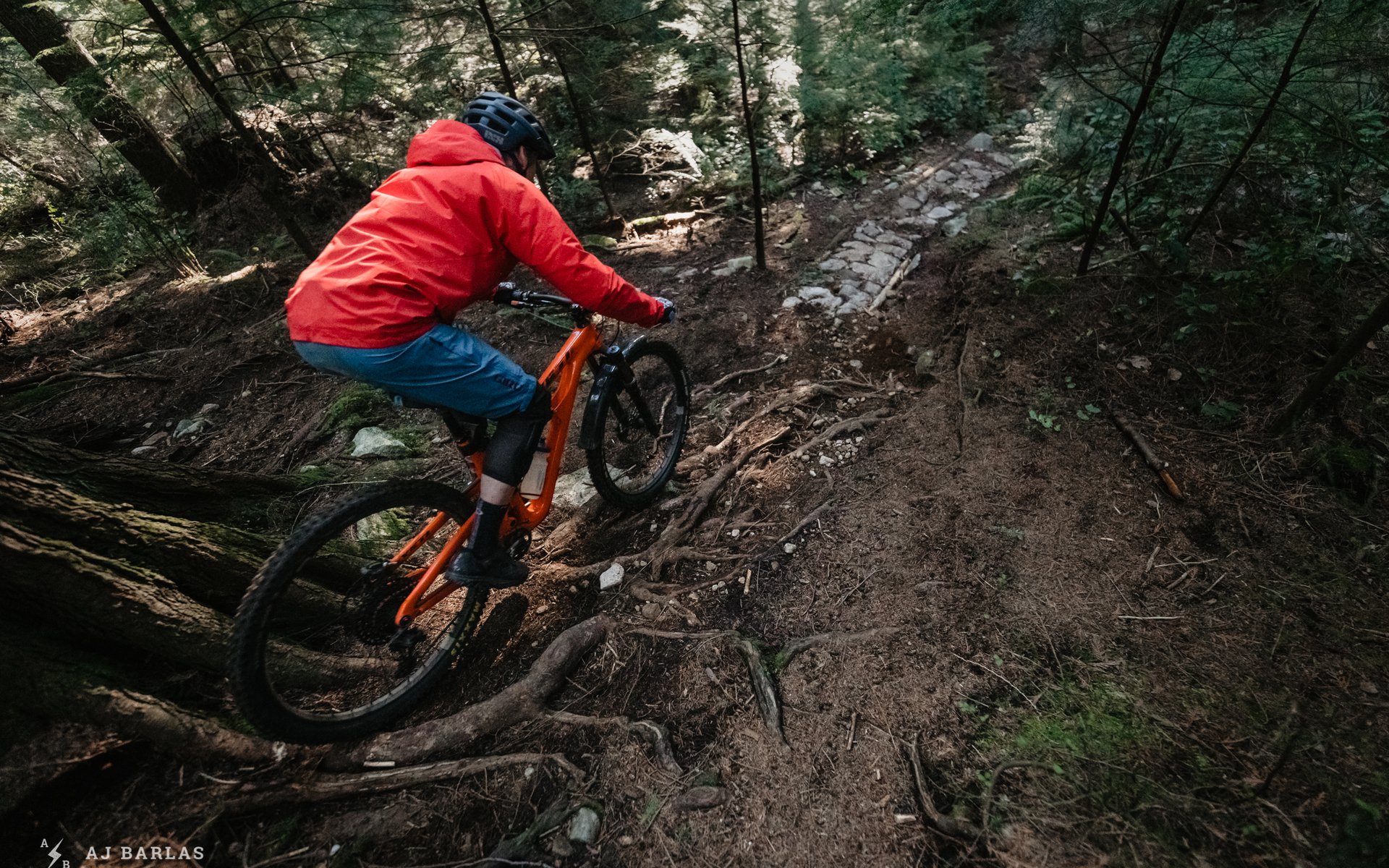
Long Term Bike Review
2019 Yeti SB150 Reviewed
The SB150 is the Yeti many riders have been waiting for; more travel, 29" wheels, a proper water bottle placement, a shorter seat mast, longer, lower, slacker, with a steeper seat angle and it comes with a lifetime warranty on the frame. The SB5.5 is a great riding bike but it lacked everything I just mentioned, and the fit in particular was a problem for those of us who have discovered the joys of longer reach with the right geometry. So it appeared that all boxes were ticked.
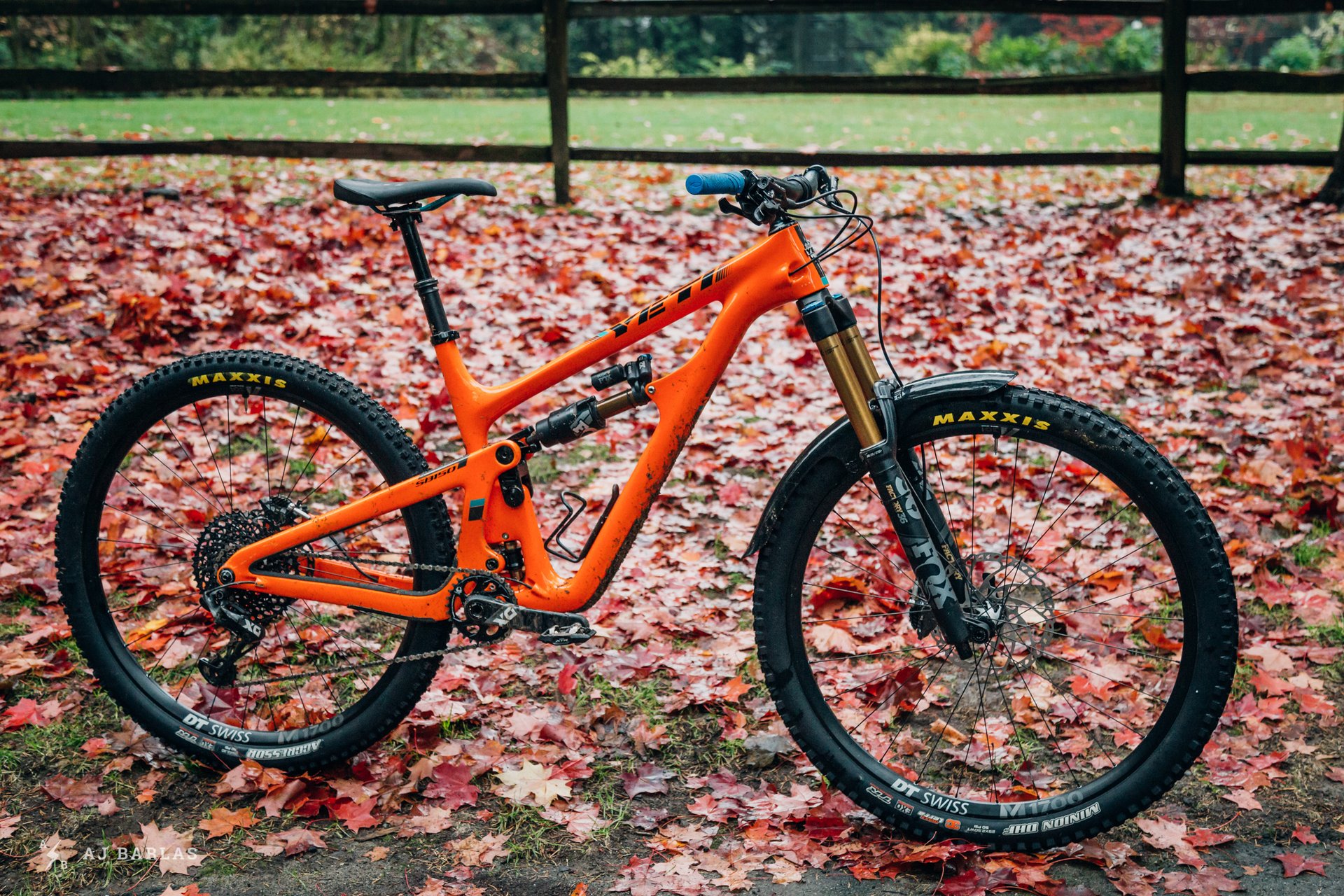
This is a good looking bike and I grew to appreciate the lines even more over time.
The truth though is when I first saw the numbers I wasn't happy. Having been pleased as a pig in poop on the SB5.5 in terms of ride and travel, I didn't want more bounce. Even for the often very challenging trails I ride here on the North Shore, where I'm often over my head, I thought the five five was up to the task with 140mm in the rear and 160 up front. I figured an extra 10mm on both ends would make the bike sluggish and I was particularly worried about the fork that is within half an inch of most dual crowns on the World Cup circuit. At the same time I didn't want to lose any travel so the 130 didn't seem like the way forward for most of my riding either. In the end I opted to test the SB150 first because it made the most sense for the North Shore, but I was torn.
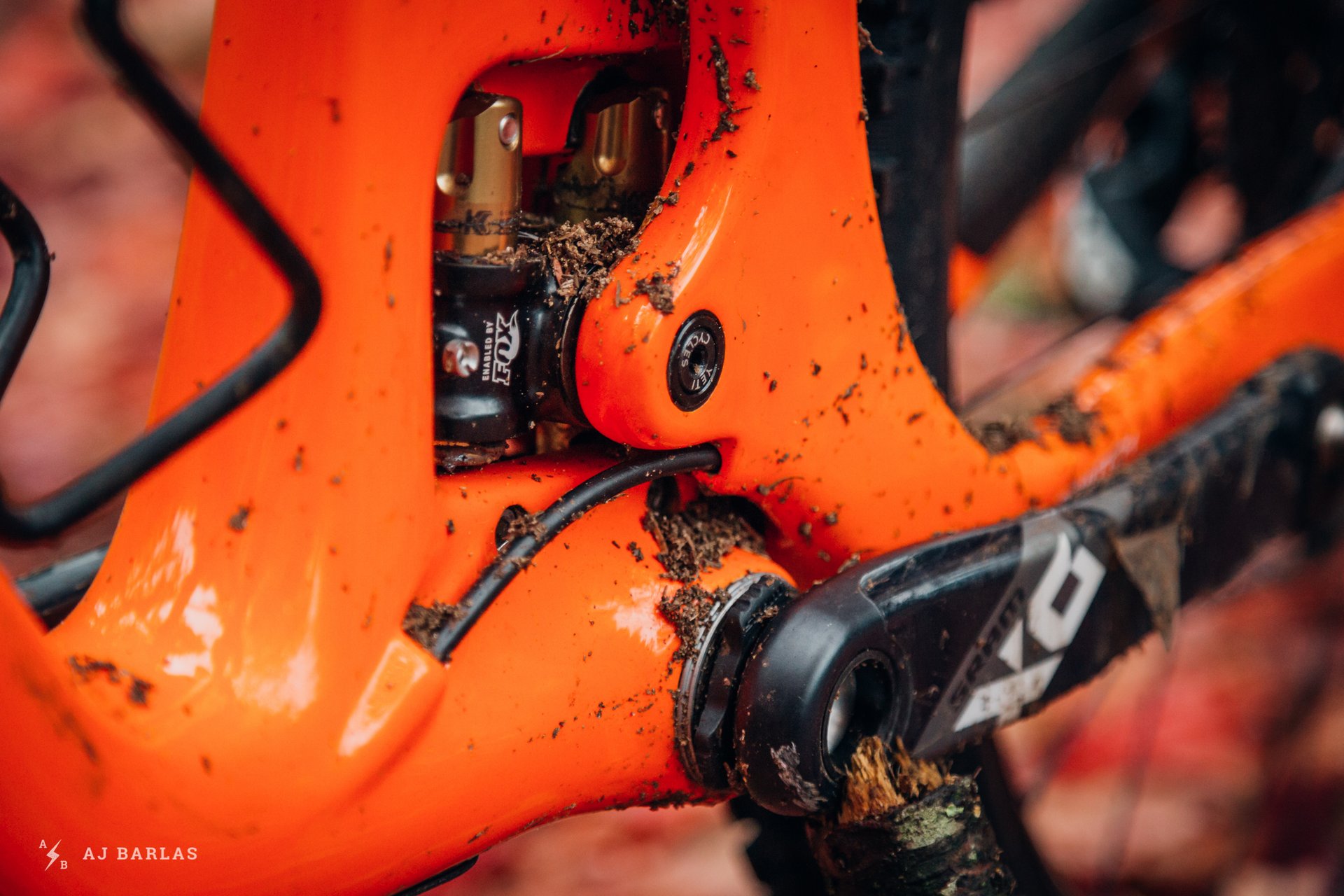
Yeti engineer and SB150 designer, Peter 'Stretch' Zawitowski will tell you that, despite the small amount of movement the linear bearing allows, that modest motion, first up and then down, is responsible for the unique characteristics of Switch Infinity bikes, namely a stable but active climbing platform and a bottomless feel deeper in the travel.
My first SB150 rides were not disappointing but this wasn't a bike I managed to get sorted quickly. I'm not sure if it was my inexperience with the Fox X2 rear shock (with 3 and 6mm Allen keys needed to adjust the four damping circuits) or the extra knob twisting of the Fox 36 Factory 36 Grip 2 over the 36 FIT 4 I'd been riding recently. Whatever the reason there was no looking back once everything was sorted.
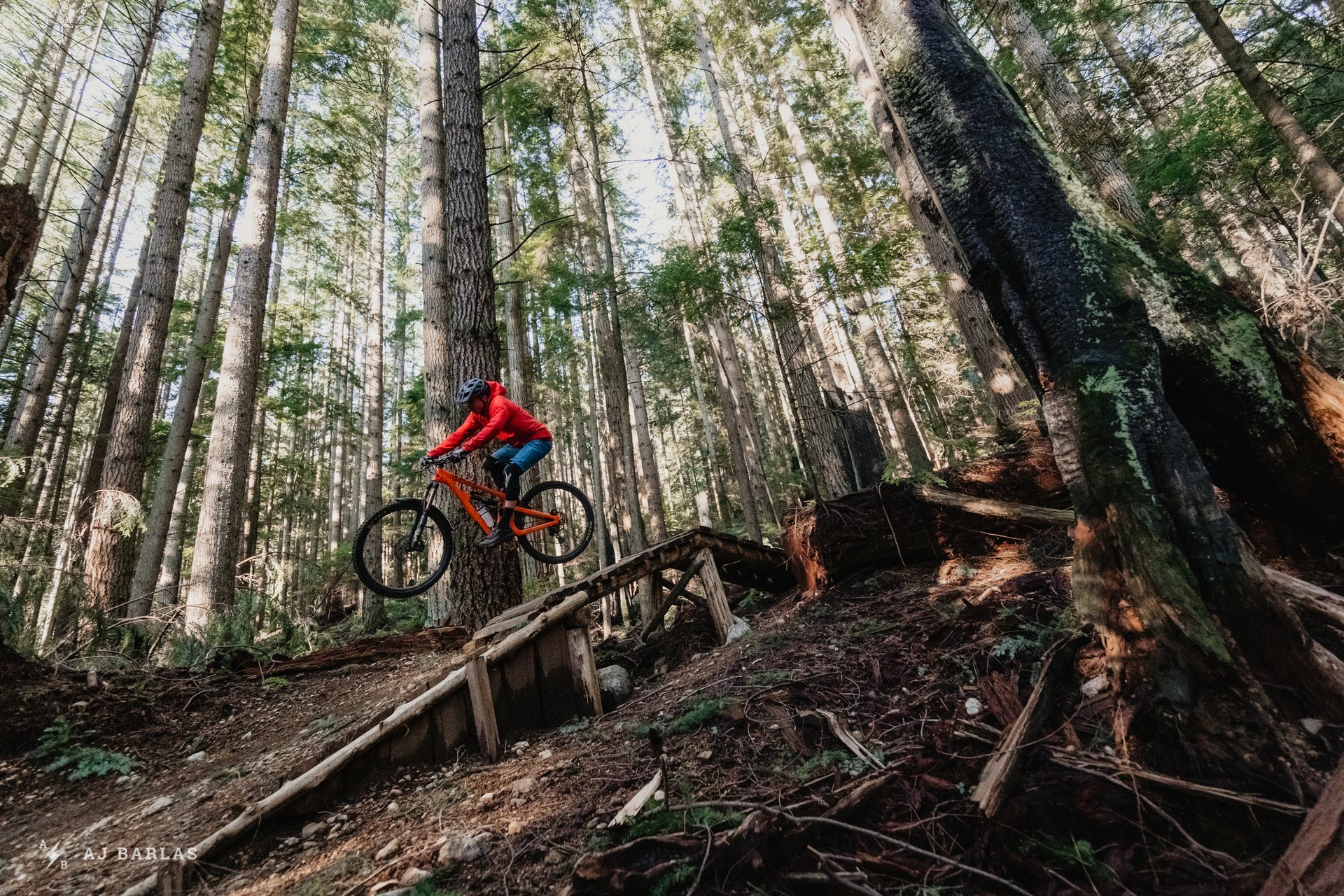
The SB150 helps boost my meagre air skills.
One Ride That Tells All
My ride this past Sunday encapsulates my experience on the SB150. I was to ride with my friend Morgan who, despite hitting the gym hard all winter, hadn't ridden since October, and James Wilson, a former XC and DH racer who is the fittest bastard I ride with regularly. I figured that Morgan would slow things down enough that I could survive the James experience despite my recent 9 days in Mexico during which time I had a nasty flu. We started up the Fromme fire road and before long Morgan told us he'd have to bail unless we slowed down. Rather than drop the pace, James gave Morgan his 3 dogs to literally pull his sleigh with added horsepower, like a dog food-powered e-bike. That meant James could ride faster than I wanted him to. I was red-lined for the entire climb but the quiet suspension and the excellent riding position kept me in the game, barely.. We climbed as high as we could and then, after a first burly descent, found ourselves at the top of Bitches Brew, a now mostly decommissioned line. I was feeling a little shaky after illness and travel but the 150 helped me conquer the steep and rooty line which eventually deposited us on Dreamweaver, one of the fastest trails on Fromme.
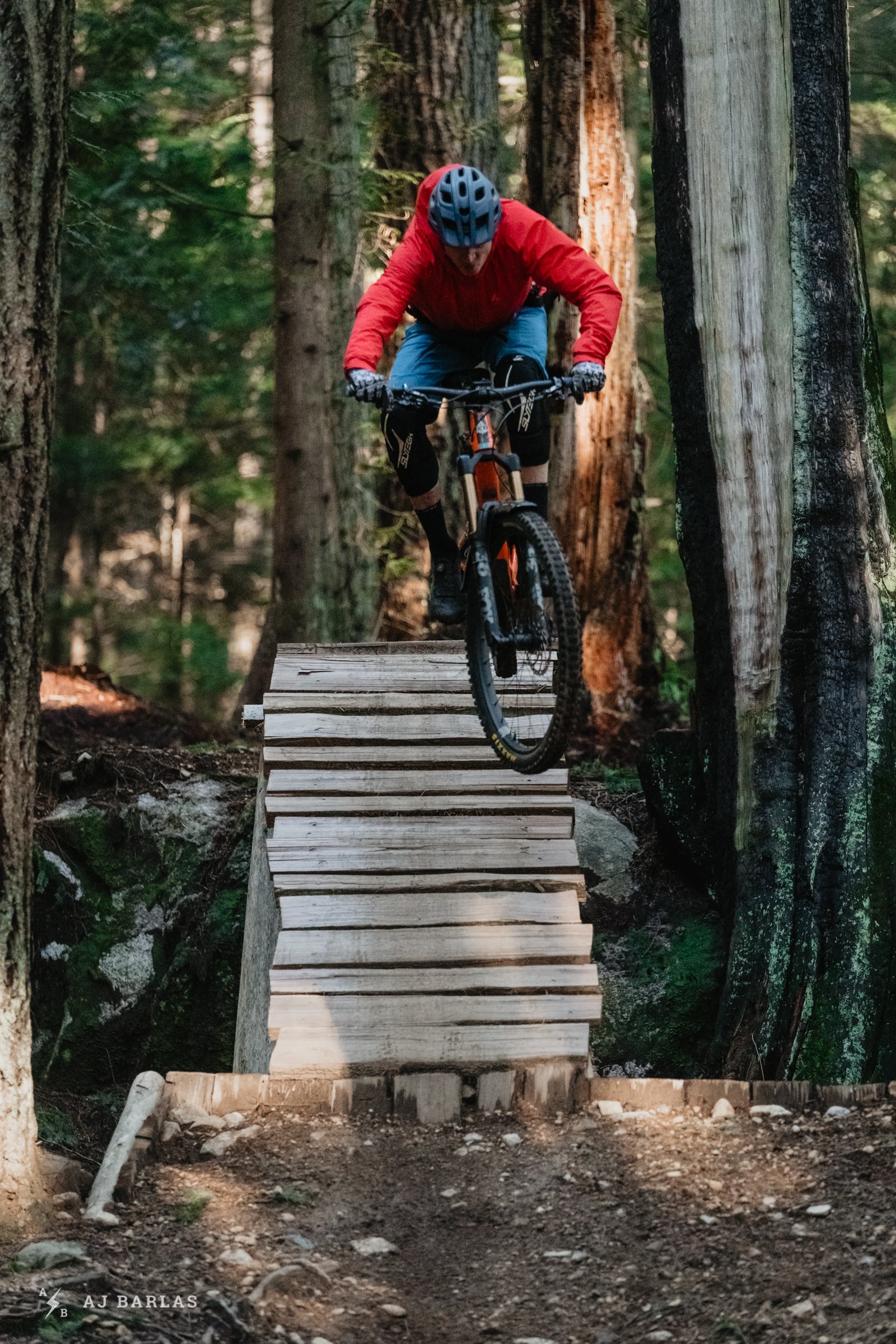
I'd be hard pressed to tell you what the sweet spot of the SB150 is because it does everything I ask of it so well, but I've noticed in particular that high speed riding, one of my weaknesses, has improved on this bike. Obstacles seem to come up more slowly because I'm more relaxed and have more control which has in turn allowed me to get more aggressive. After our speedy trip down Dreamweaver we got onto D'yer Maker, a portion of Fromme's unrelenting climbing trail, and cranked back to the fire road. The pace was again higher than I'd like but the SB150 gets the power down effectively on tech single track climbs as well. Later on I was amazed to clean a very difficult steep section - after almost two hours of riding.
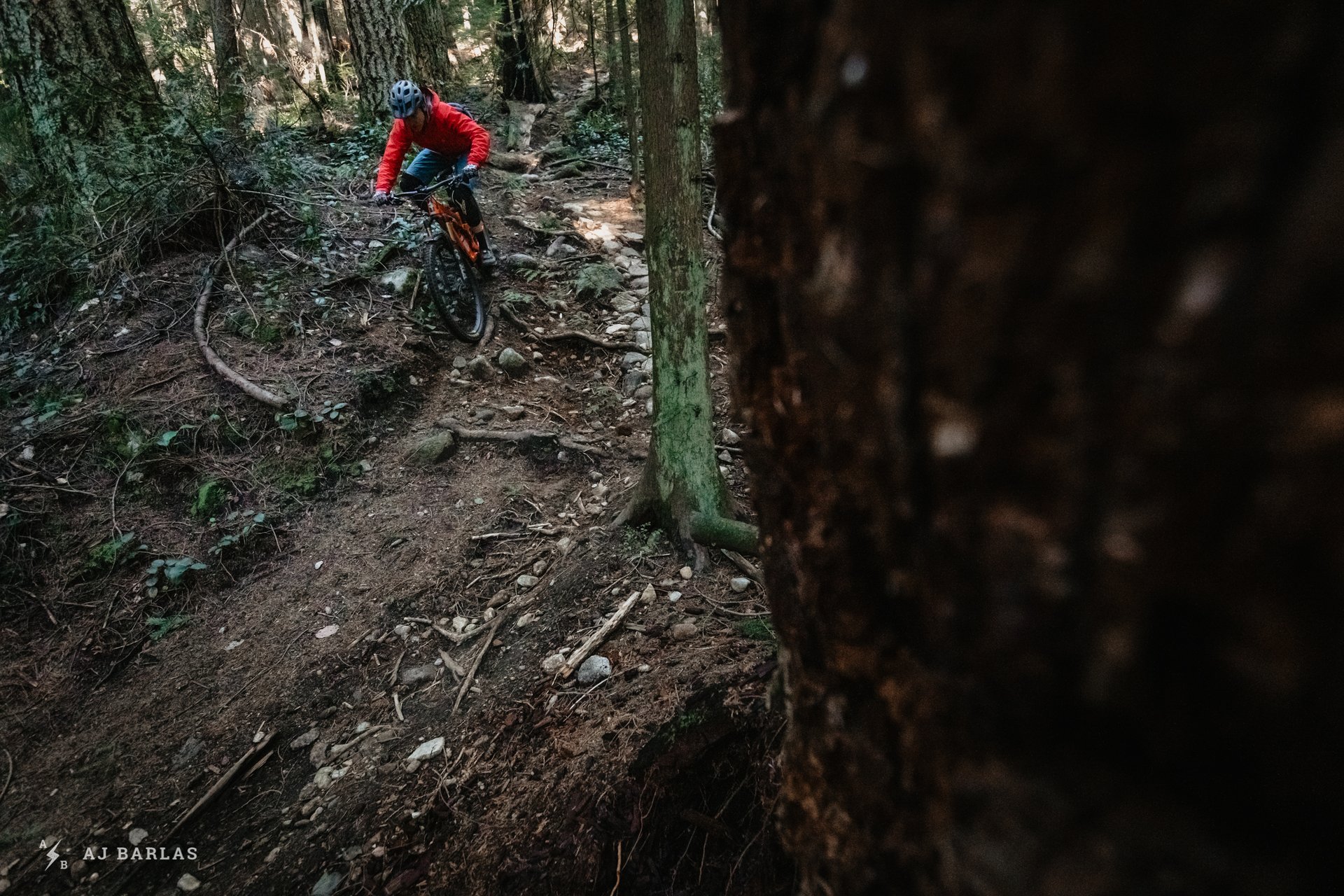
The Fox X2 in the rear plays a significant role in the impressive performance of the rear suspension.
Our next descent was Crippler, a janky old school trail with many obstacles to get over. This is the sort of terrain I was worried about with this bike but it pretty much laughs at old school tech. I wondered if the 170mm fork would make getting up and over logs and other features a chore but in fact it's one of the most nimble platforms I've ridden. Crippler left us at St Mary's and we again pedalled up single track to Skull, one of the steepest trails on Fromme. The 64.5º head angle combined with the 170mm fork are ideal when things tip down and I pretty much giggled all the way back to our starting point on Dempsey. There were only two moments when I would have preferred another bike. Fatter tires than what will fit in the rear of the 150 would have been helpful on Bitches Brew because of all the square edges and roots in extremely tight quarters; a little more grip and a little less pressure would have been great. The second spot was on Skull where slow, steep and awkward downhill switchbacks are frequent. More on that below.
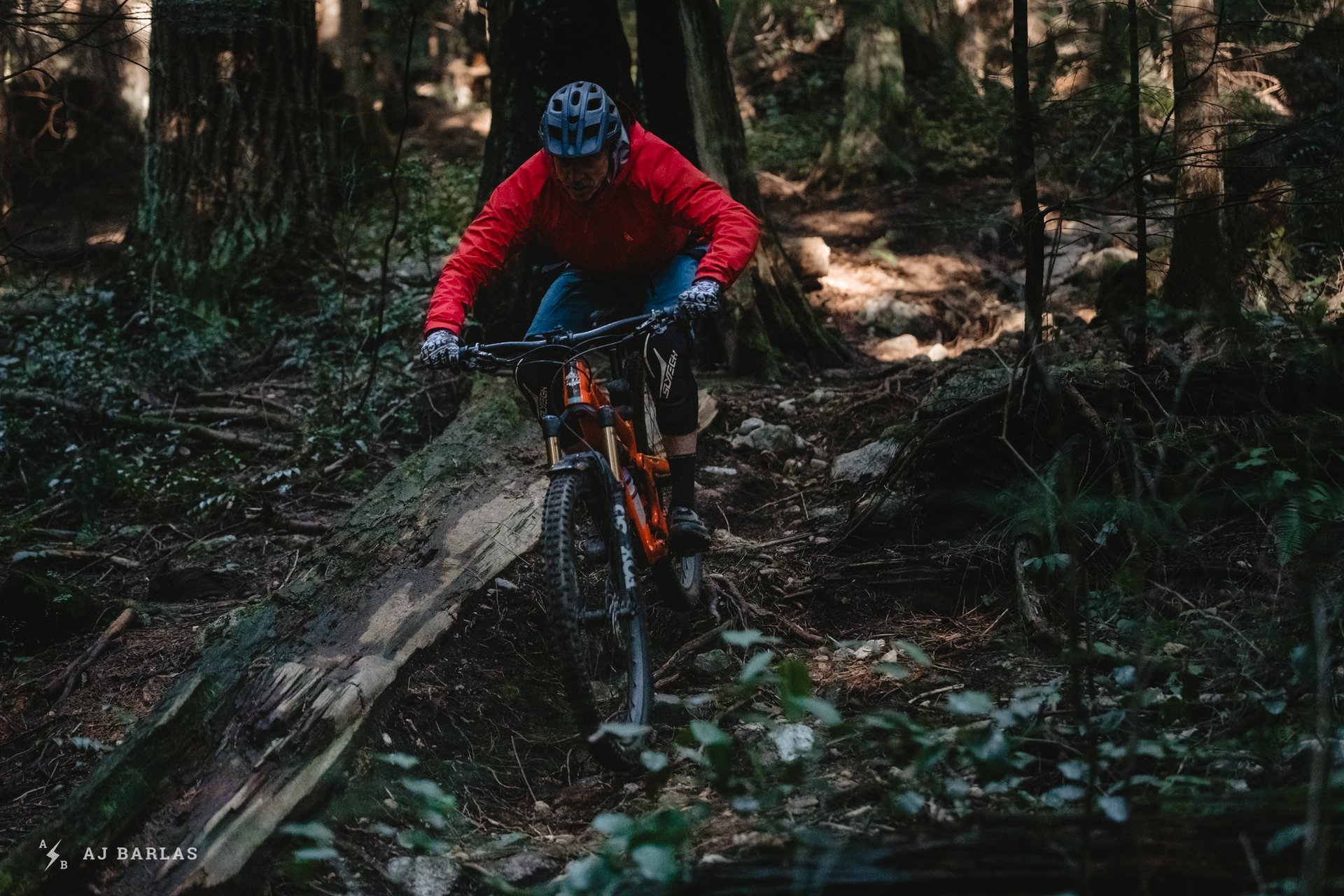
Speed or low speed trails that encourage clumsiness; SB150 don't care.
The Ride - Down
There are bikes that seem to get you through stuff without much awareness of what's happening in the rear, which is how I perceive DW link bikes as one example, and others that allow the rider to perceive the motion of the rear wheel through its travel. For me the SB150 is the latter. The rear end is very active without much platform feeling on the way down but with no wallow either. It's nicely progressive without having a harsh ramp towards the end of the stroke and drops to flat are a treat with the combo of the Fox X2 and the 170mm Grip 2 Fox 36. Try as I might I never felt the rear end bottom despite sliding the travel indicator off the shaft several times. The bike also reacts adequately during consecutive high intensity impacts at speed, with little harshness or slowing of progress, but I feel there is more tuning to do here. This isn't a frequent condition on my rides so it's a set up element I have paid less attention to.
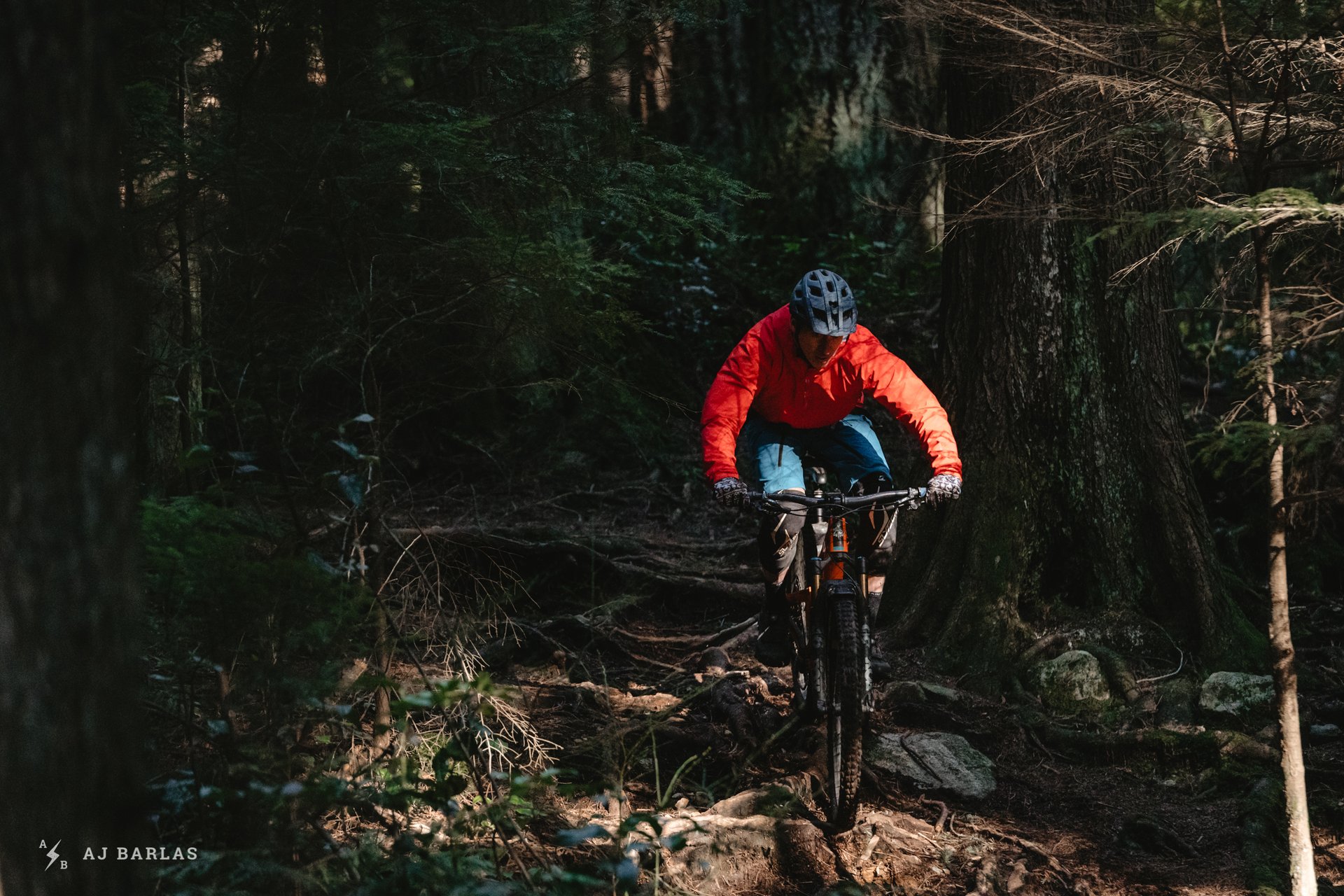
Eating up the bony bits.
The SB150 thrives at speed. It picks up pace quickly, either after a couple of pedal strokes or aided by gravity, rolling smoothly over many different trail surfaces. Once it reaches terminal velocity it's easy to control, encouraging me to get a little loose - which always makes me smile.
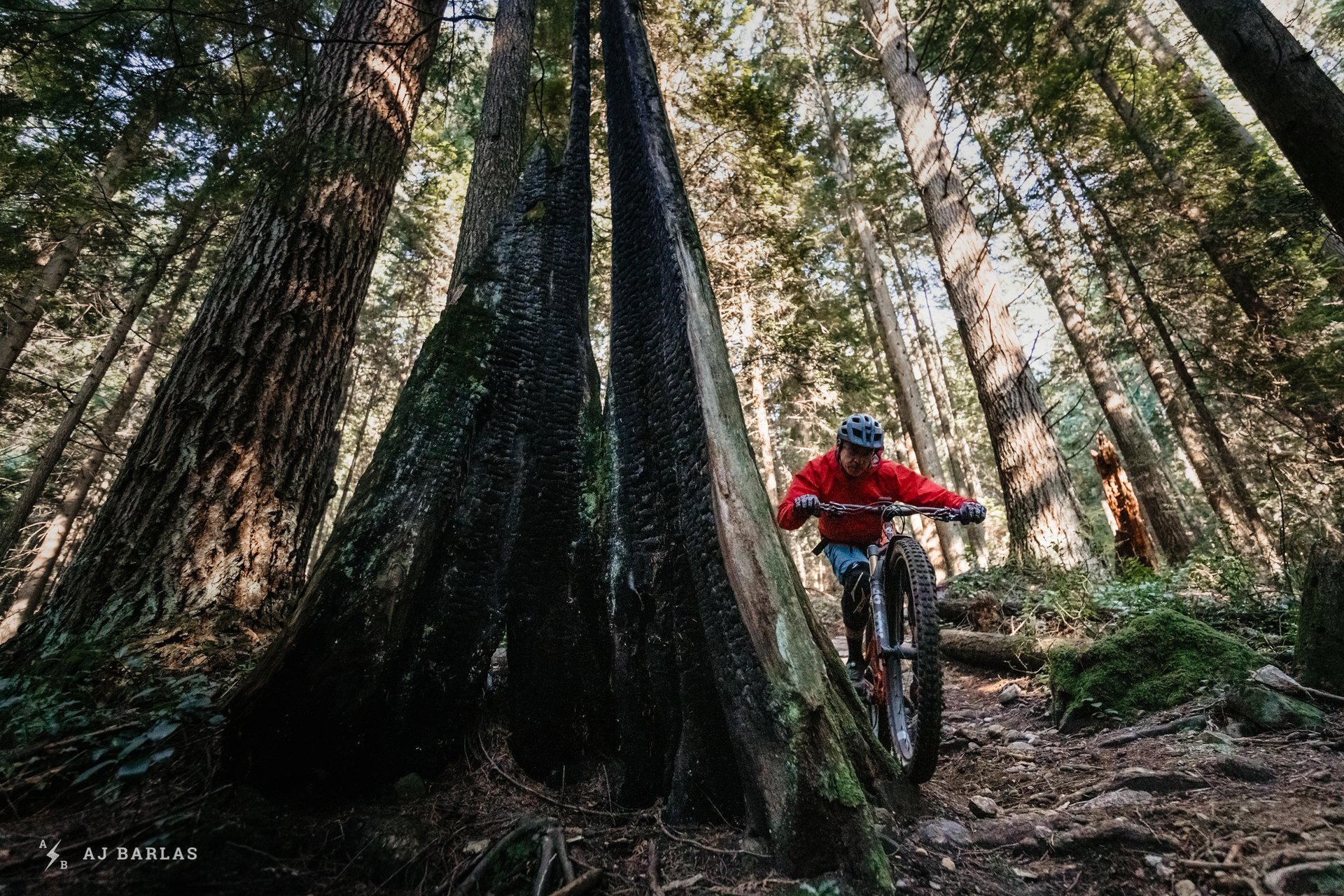
Precision lines are a breeze.
As I mentioned earlier, despite a long wheelbase and reach, this is a nimble machine. Getting it off the ground for obstacles is easy at speed and even low speed log crossings are a breeze. It feels like a 140mm bike in those situations. Steering inputs are rewarded with accurate outputs and I find it easier than usual to nail pinpoint lines at speed or in slower tech zones. In situations where it's necessary to negotiate a very steep downhill switchback at low speed, with most weight on the fork, I'd prefer a more robust feeling frame. The Bronson for example was a master in these situations because I felt I could lean on the frame and let it do the work. While the 150 negotiates these moves adequately, It seems to require a more attentive grip on the bars, inspiring somewhat less confidence. My perception is that the difference is the frame but other differences between the bikes are a longer travel fork and a larger front wheel, which could be contributing factors.
Cornering
Making arcs with this bike is ridiculously fun. I can approach the limits of adhesion, occasionally crossing that line, with the sense that I know how the wheels are going to react. A slightly forward stance is rewarded, particularly in slower, tighter turns, and holding a line on everything from snow and muck to marbles on hardpack or loam, is as easy as tipping the bars, dipping the knees and looking toward the exit. Angling the frame down is encouraged by the very low standover, but I would have appreciated a 170mm dropper rather than the 150mm provided by the Fox Transfer. I used to be fine with a 125mm dropper but I've been addicted since riding my first 170.
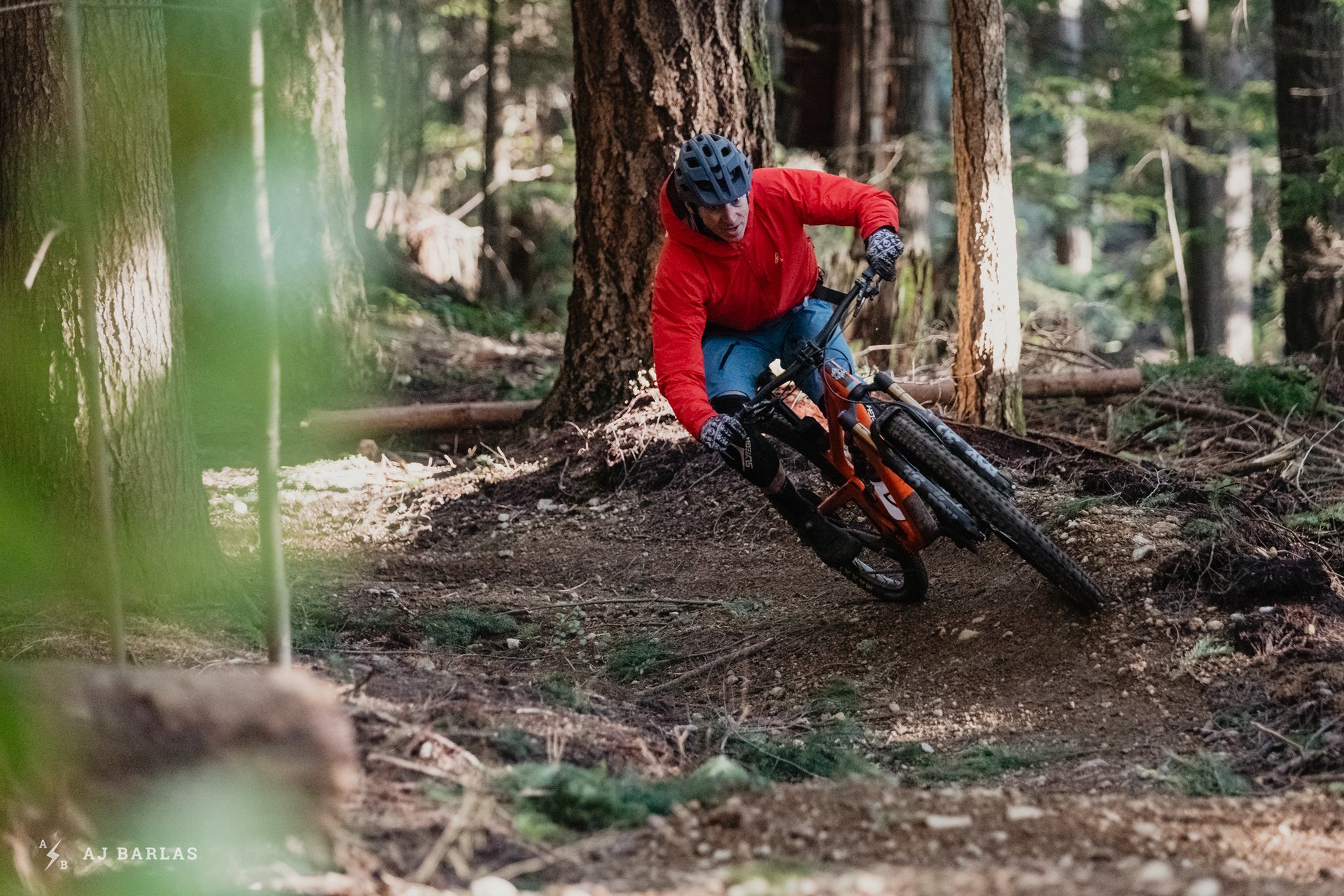
Going Up
It's a bit mind boggling how well a bike with this much travel can climb. In the old days we used to pedal up Mt. Fromme on bikes like the Specialized Bighit or Demo or even the Banshee Scream. I used a sandwich of bashguards with a manual shift granny gear. We'd get to the top, younger and fitter as we were, and then have all the travel we wanted on the way down. To think that I can ride a bike now that is 10-15lbs lighter (maybe 20 compared to the Banshee) with almost as much travel that climbs better than XC bikes of the day and descends better than all of them is hard to believe. But climb she does.
Here's a shocker; I never felt the need to use the lockout. If I spent more time climbing on pavement I wouldn't object to locking things out but that rarely happens. The rear end is active and supportive, thanks to an appropriate amount of anti-squat apparently, and it feels fast and efficient.
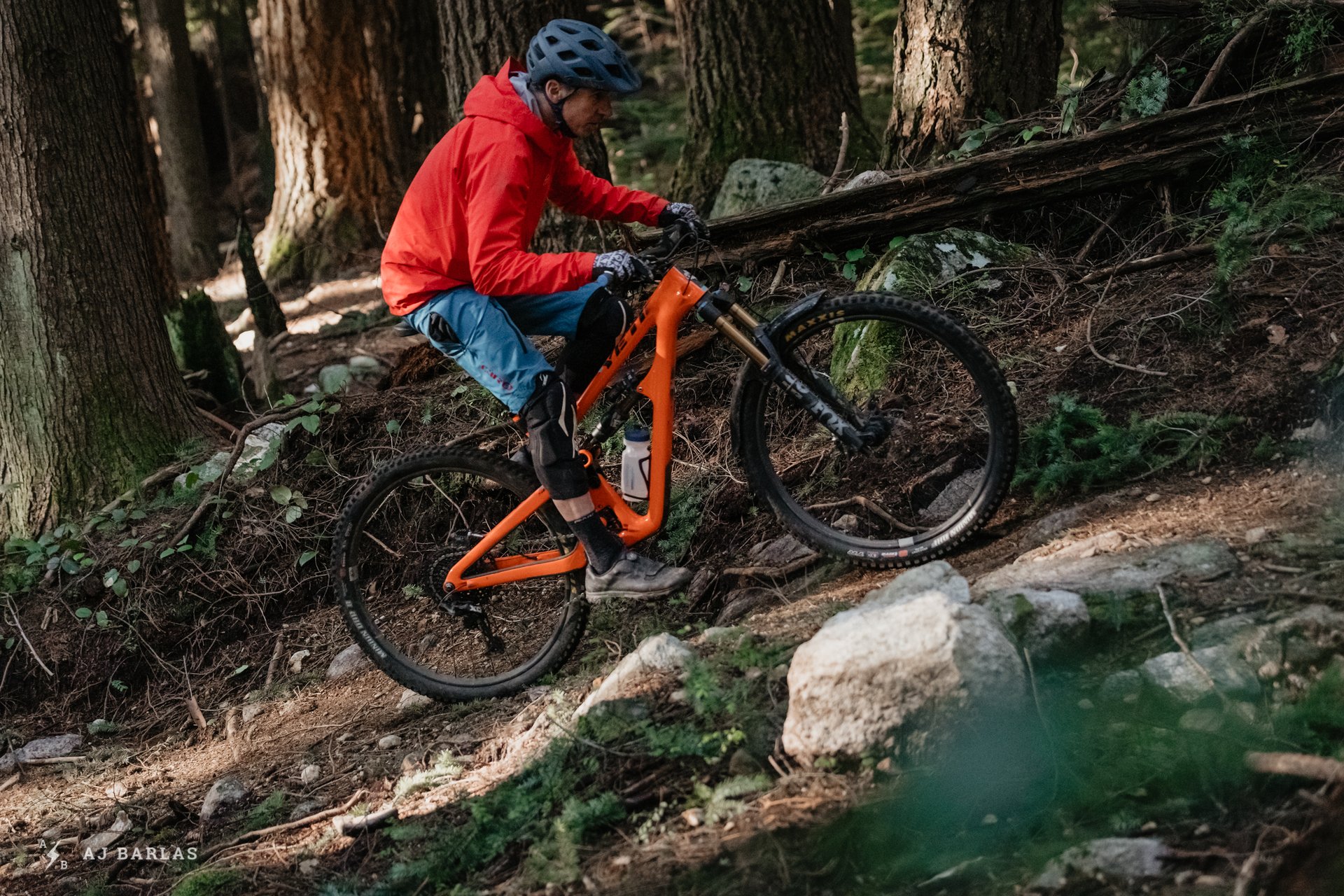
It's possible the SB5.5 with the right fit would climb slightly better than the SB150, but the longer reach and steeper seat angle allows me to perform better on the 150.
The Switch Infinity Linear Bearing - Maintenance and Wear
Despite having ridden three Switch Infinity bikes for long periods, I'd never done any maintenance or torn down the linear bearing. I don't own a needle grease gun, and for test bikes I try to do as little maintenance as possible to mimic consumers who are similarly lax and to simulate a longer test period than is generally possible. And then I read Fox's* warning about disassembly of the mechanism - stating that injury or death may occur if it was disassembled by a schmo like me. So this schmo got to work.

The first thing I did after reading this was disassemble the mechanism. Thus far very little death and almost no dismemberment has resulted.
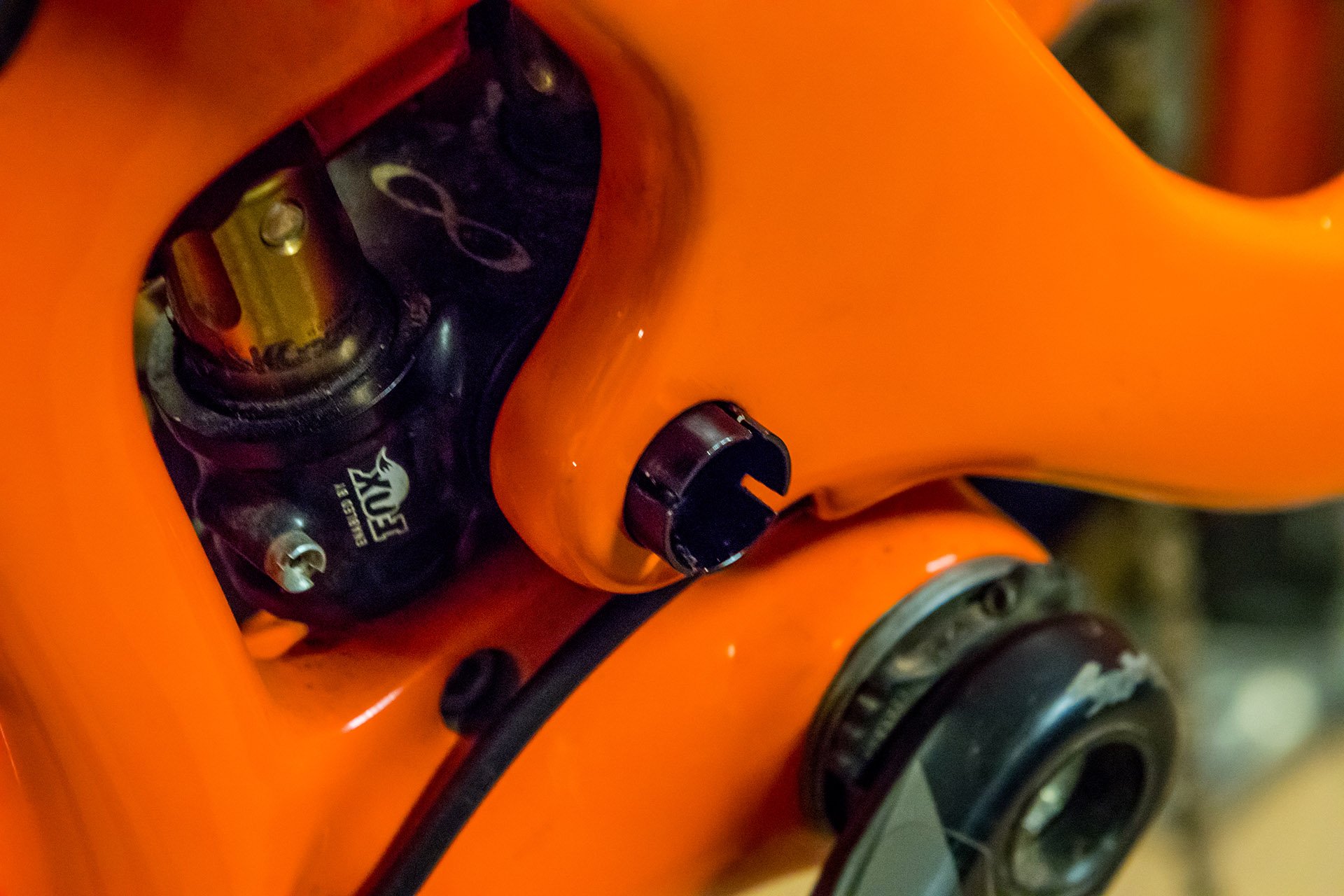
The collett axle took a little encouraging to remove but it wasn't too bad. Everything looked fine at this point.
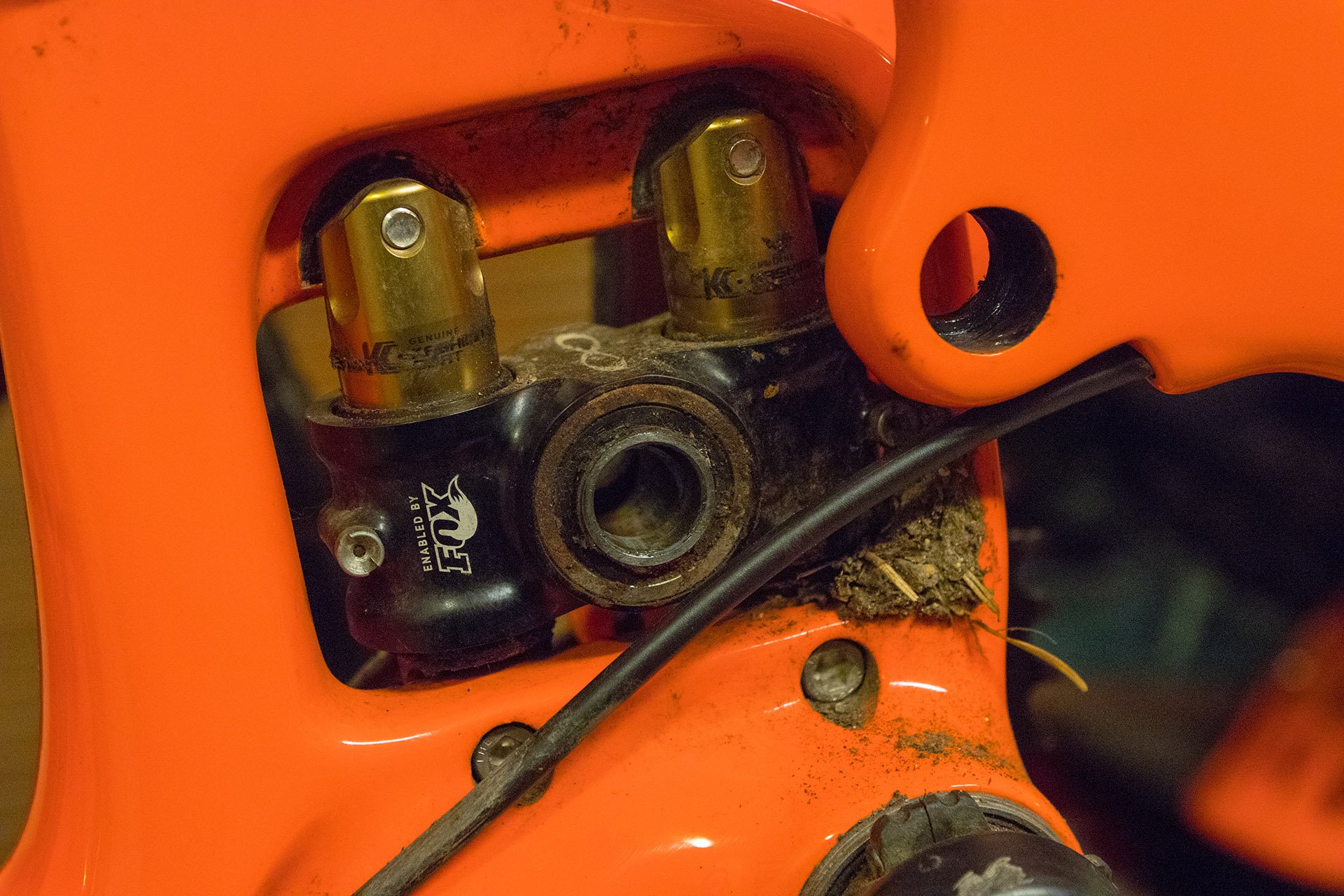
This however is beginning to suggest a history of neglect.
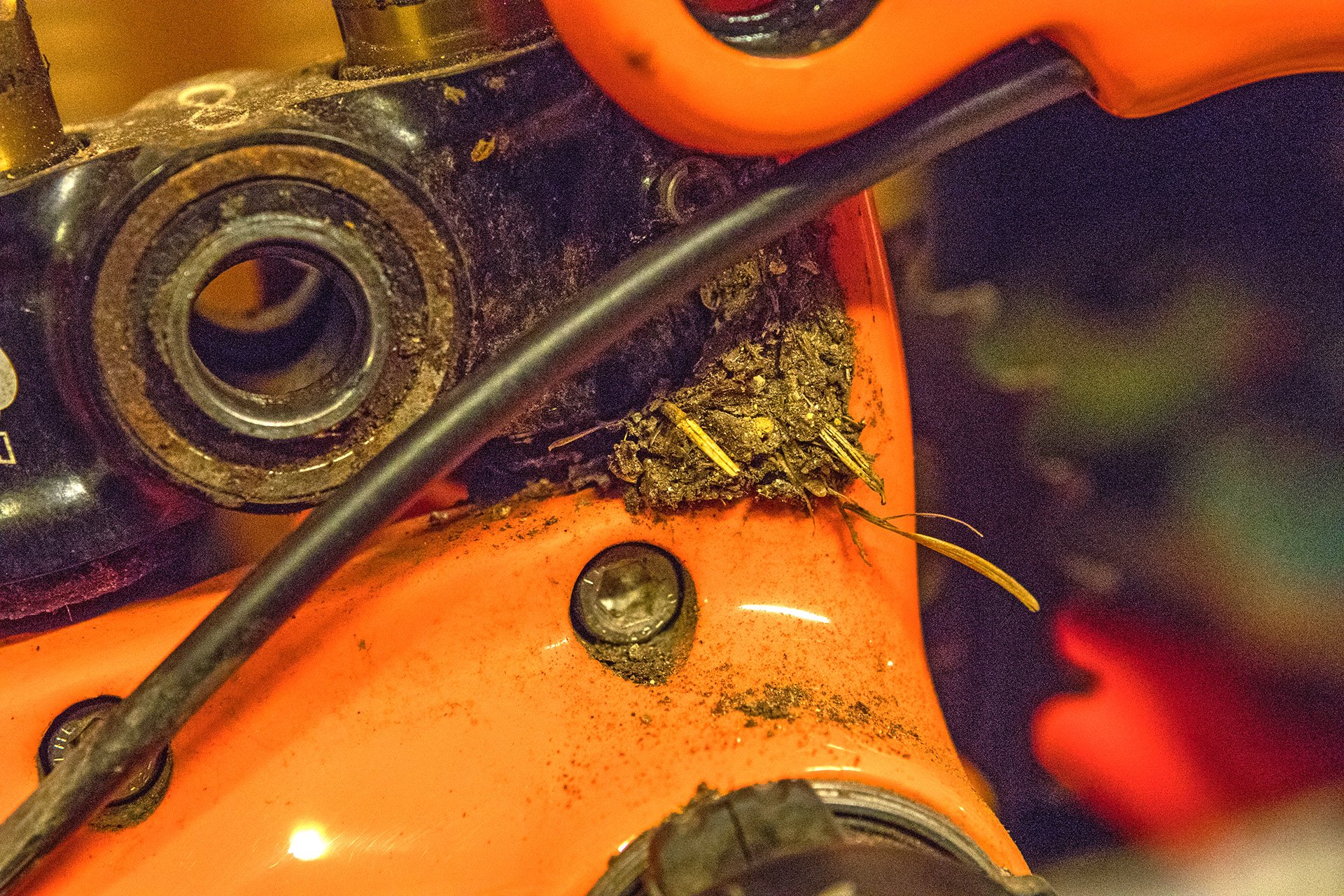
Neglect confirmed.
The first part of the process is removing the main pivot Collet axle along with the wedge bolt and nut. This part of the process is explained very well in Yeti's excellent service manual. Once that's done, removing the device from the bike is as simple as twisting four Allen head bolts* and the rest of the process can be done without tools. Careful to ensure I placed the stanchions so I would be able to replace them in the correct sleeves, I simply slid them out of the shuttle. Yeti and Fox recommend service every 75-100 hrs for dry conditions, and 25-50 in muckier climes. I likely rode 50hrs in January alone and I've surely put well over 100 hrs on it in total, much of it on days that were either wet, snowy or a combo of the two. To say I ignored the service interval would be a vast understatement. Most of the time I sprayed off the bike with a hose, directing water directly into bearings (like the Switch Infinity) but I also went through a period without any post-ride cleaning because I was testing a new lube. I took these approaches because neither is recommended.
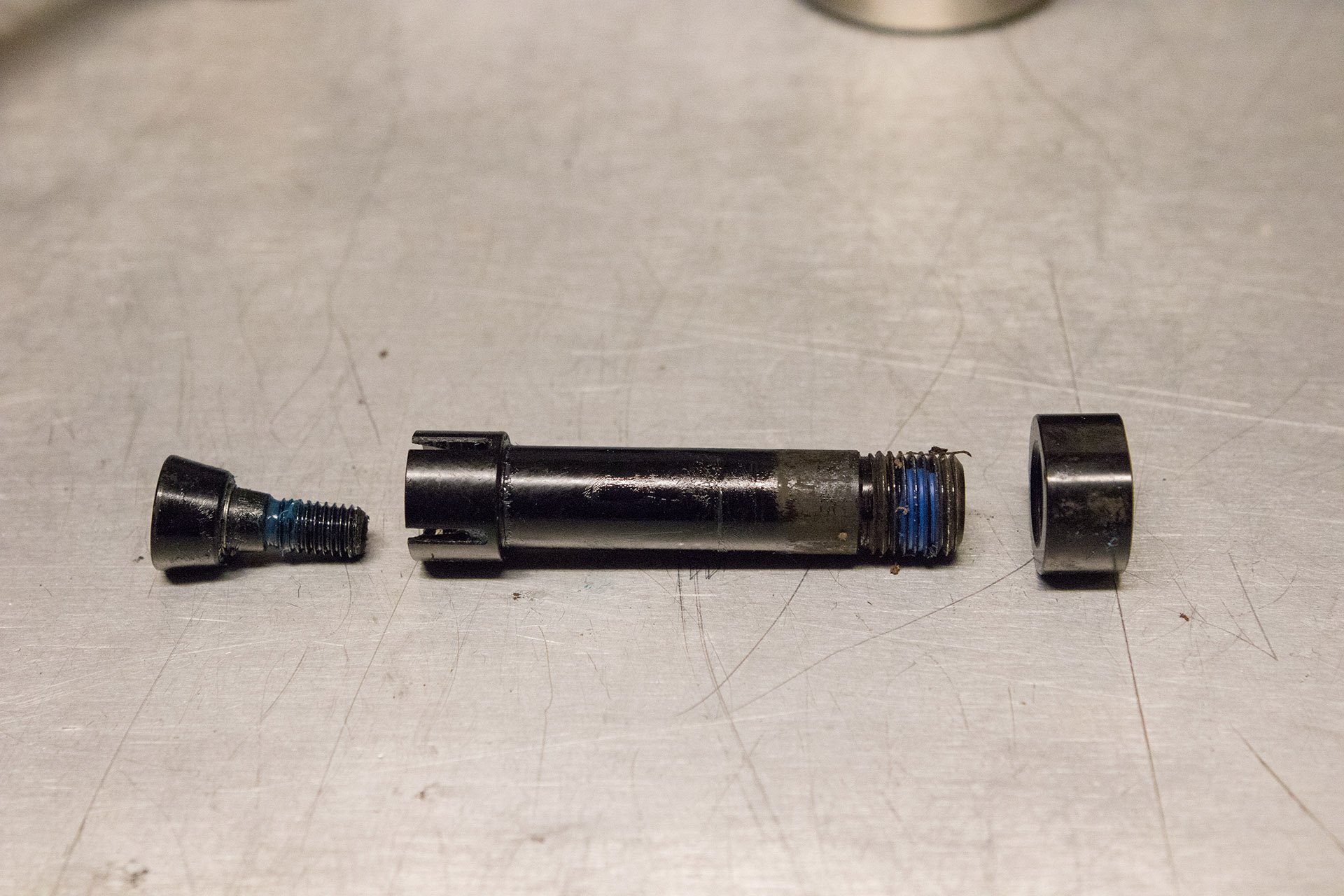
The main pivot Collett axle with wedge expansion bolt (left) and Collett nut comes apart with a 5mm Allen and a 10mm Allen.

Ridden hard and put away wet and sprayed haphazardly or wet and dirty. Entirely neglected.
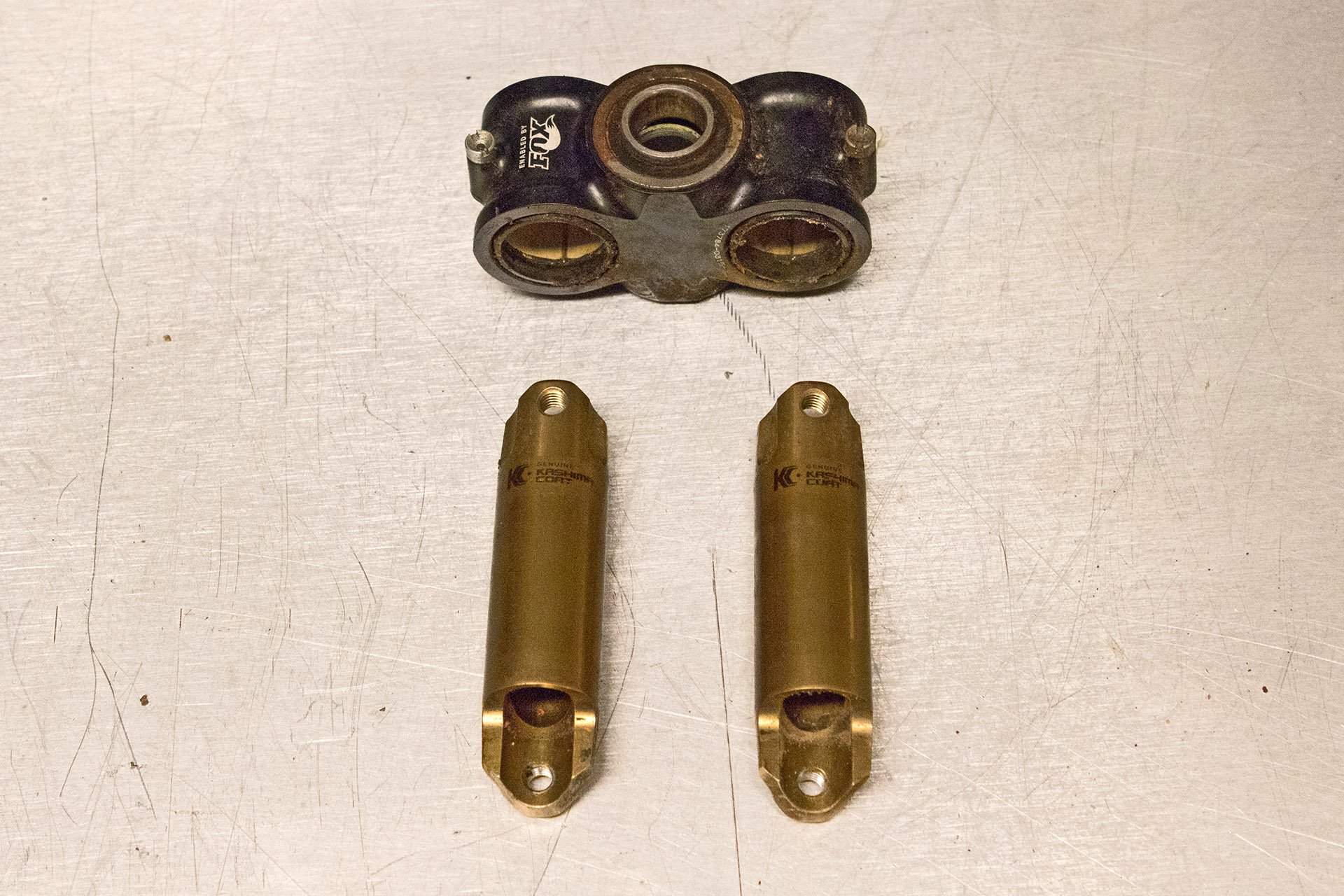
Not bad at first glance all things considered.
Once I cleaned off the muck, removed it from the bike and slid things apart, things didn't look too bad. The bearings were a little corroded externally but at first glance the stanchions looked pretty good. I didn't pop the covers off the bearings but they rotated smoothly. Upon closer inspection it became clear that one shuttle is worn and scored in a small area to the point that it is through the Kashima coat. There was similar wear inside the shuttle, but while Yeti undoubtedly will recommend replacing the shuttle under warranty, I have total confidence in the performance of the slightly worn mechanism, which was backed up by checking the movement of the swingarm after I reinstalled the piece and detached the rear shock.
*Fox Racing produces the linear bearing for Yeti
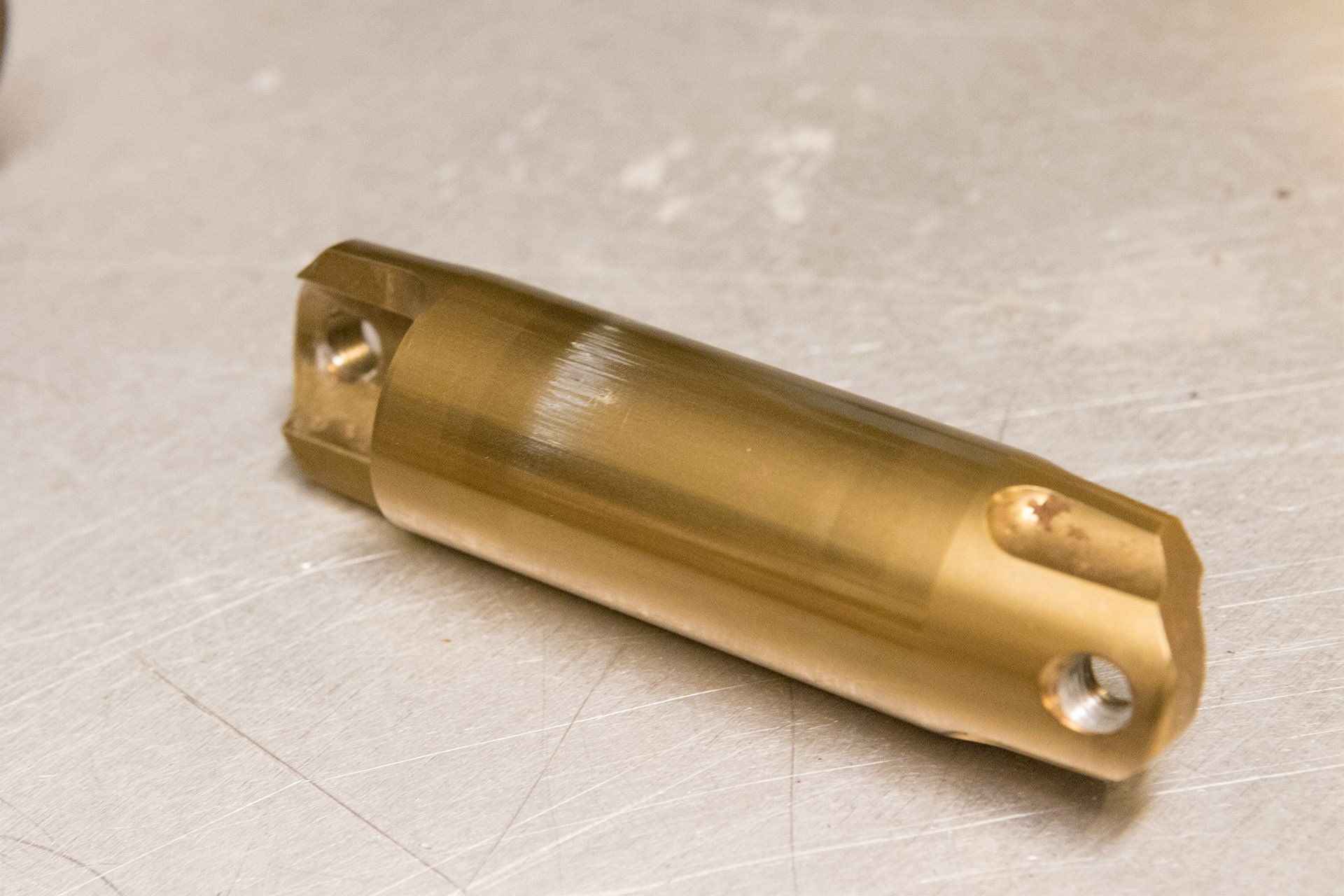
Closer inspection revealed some scoring and wear on the rear stanchion, which is exposed to more grit. Note - this was a result of no maintenance done in terrible riding conditions. Regular grease injections should have prevented this wear entirely.
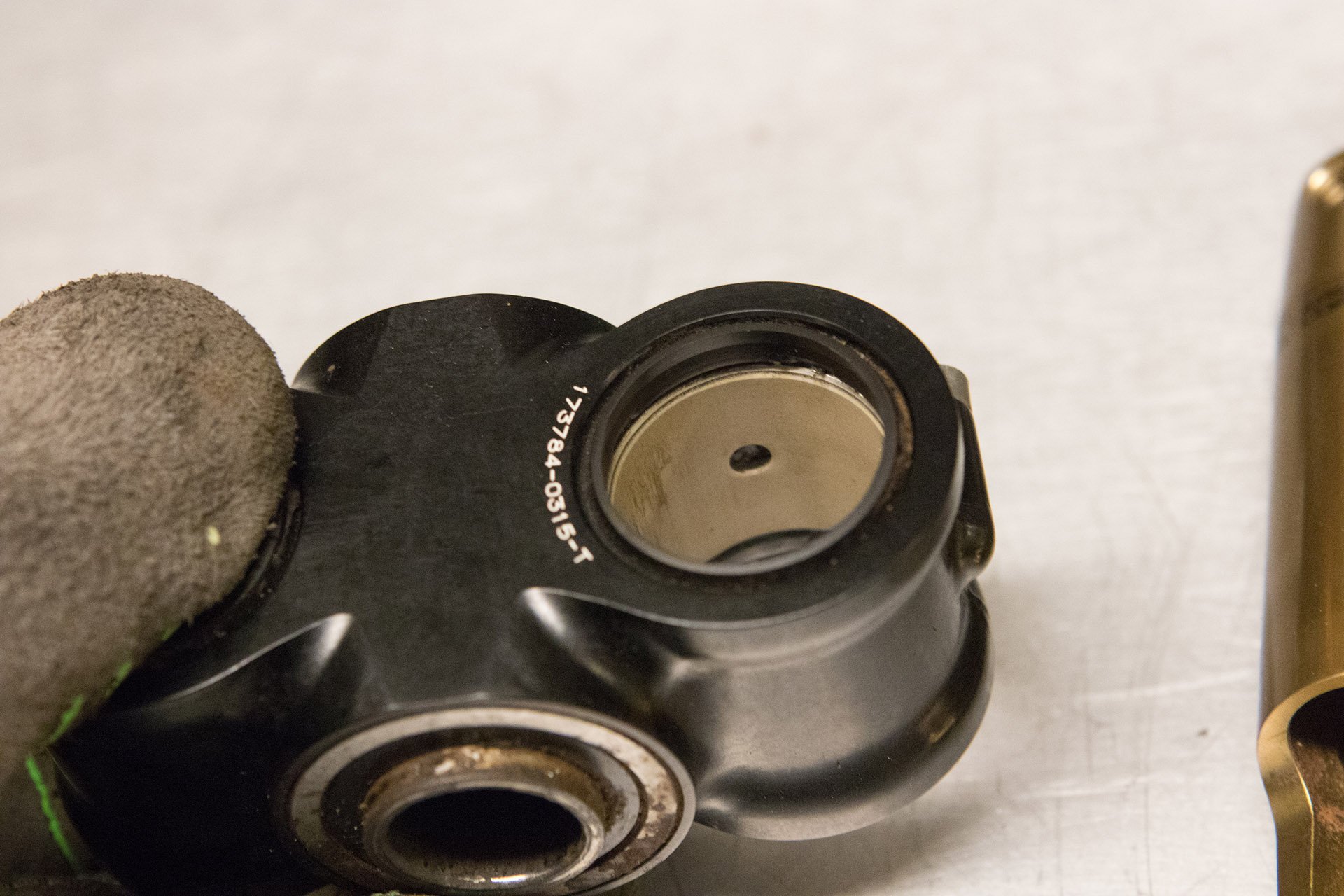
Corresponding minor scoring inside the sleeve.
The take home is, buy yourself a needle grease gun and squirt in some good quality grease regularly. In my conversation with Yeti's Chris Conroy and Peter "Stretch" Zawitowski they talk at length about the proper procedures regarding the linear bearing, and why user removal of the mechanism isn't recommended.
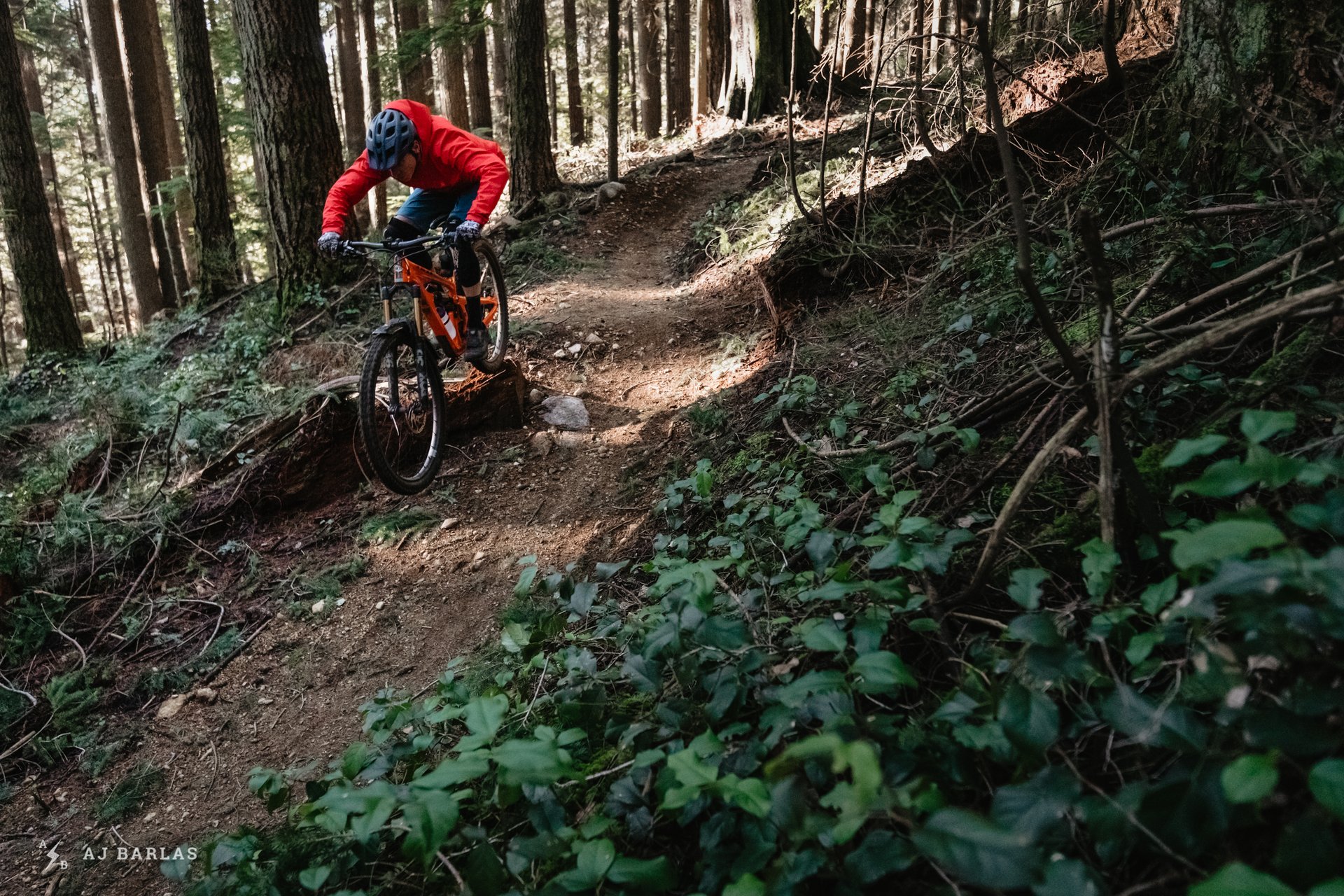
Does it count as a tail tap if it's unintentional?
Some Spec Notes
This is a sensible spec for the most part without many surprises, aside from the increasingly rare Shimano brake/SRAM shifter combo. Both 4-pod XT brakes required a bleed midway through the test but I was adequately pleased with their performance. I generally prefer more modulation and in my experience the newest SRAM Codes have more power. I'm not a fan of the way the XT lever and the SRAM GX Eagle shifter mesh. For me there was only a narrow placement that worked adequately for my needs and once, after a crash things shifted and the shifter restricted the lever's return until I figured out what was wrong.
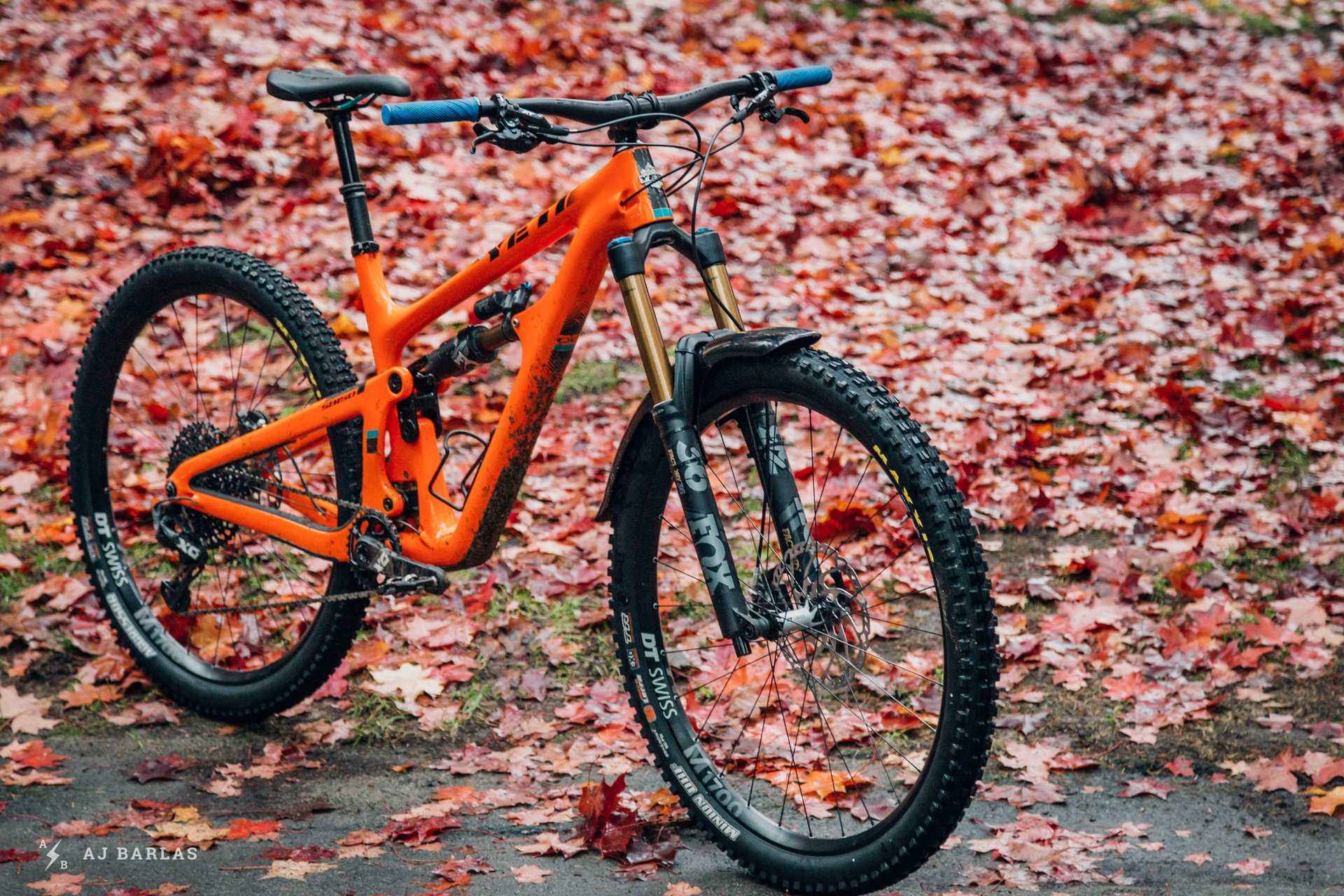
Calling this an X01 build is a bit of a stretch.
The SRAM bottom bracket has begun to squeak intermittently, likely a casualty of my aforementioned heavy-handed hose usage. (actually this began after I had been away for almost two weeks and after a few rides everything was back to normal). I have been using the 150 as a test platform for several sets of wheels so I don't have any new reports on the stock DT Swiss M1700 wheel set, although I dented the rear early on. The Fox Factory 36 Grip 2 fork and X2 rear shock have performed flawlessly and my report on the Eagle drivetrain is equally positive and uneventful. Although I would have preferred a 170mm drop, the Fox Transfer dropper worked extremely well and didn't require any maintenance or adjustment for the duration of the test. I didn't love the stock lever however and I replaced it with a PNW Loam Lever, which is the best I've used. The WTB Volt saddle got along well with my ass bones as well.
Yeti calls this an X01 build but that's somewhat misleading considering only the cranks and rear derailleur are X01 components. The cassette, chain and shifter are GX. I have no issue with the GX shifter or chain, and I actually prefer the feel of the GX's aluminum lever, but the GX cassette is significantly heavier and less expensive than the X01 version.
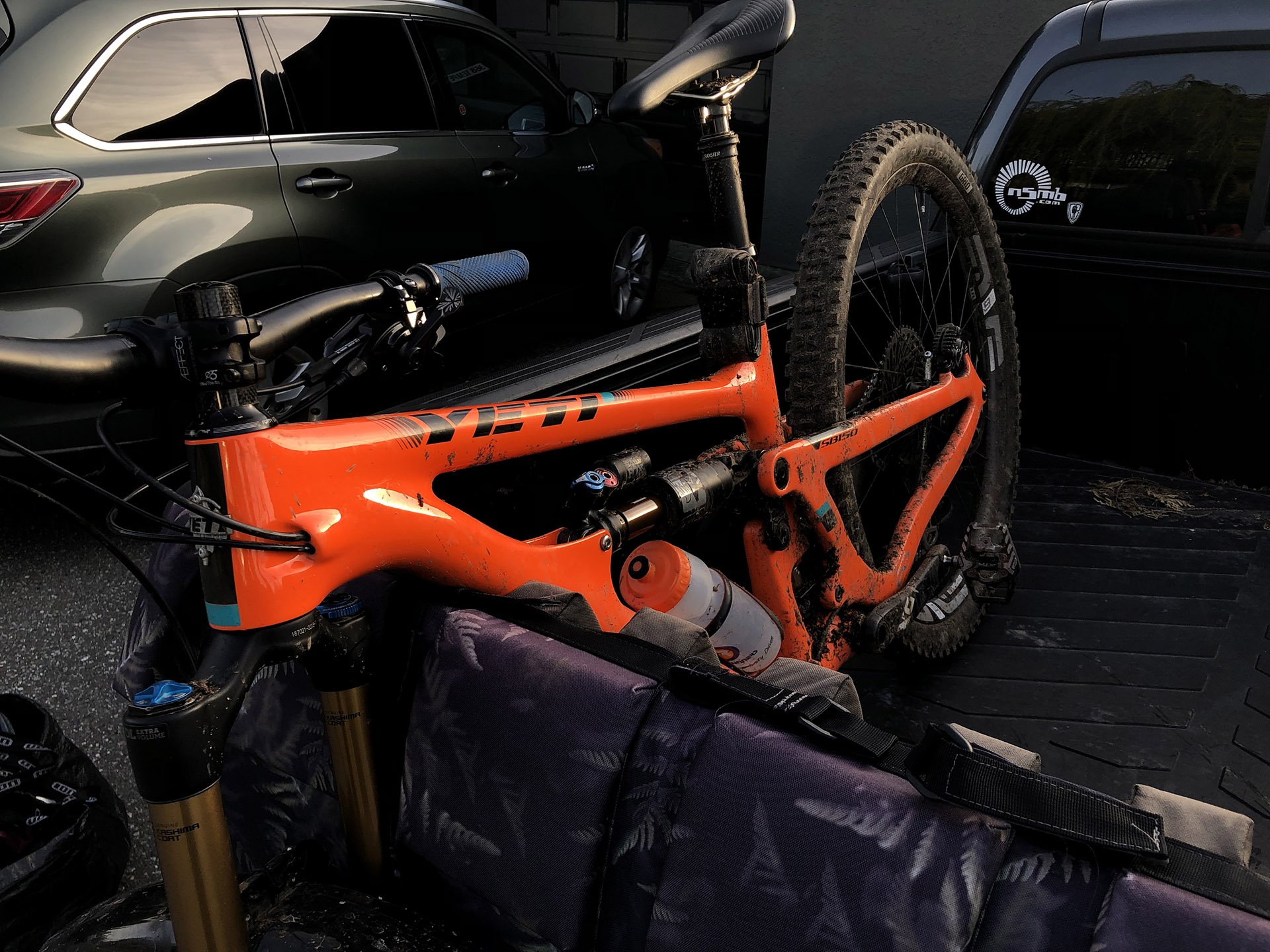
The bike looked so good in the back of my truck after yesterday's ride I had to snap a photo. My poor treatment and a long winter of riding were no match for the excellent paint finish.
Frame Details
The Turq frame's finish has proven to be very durable despite a nasty winter of riding. I criticized the lack of downtube protection for tailgate transport, but there's hardly a mark on the paint. Beyond that Yetis generally ship* with a protective decal kit which is custom cut for the frame.
Another nice detail is the hatch near the bottom bracket to help with dropper cable installation. The chainstay protection remains intact and has done the job admirably. Water bottle space is generous, as is standover height and there is nothing about the geometry I would change.
*My tester did not include this kit
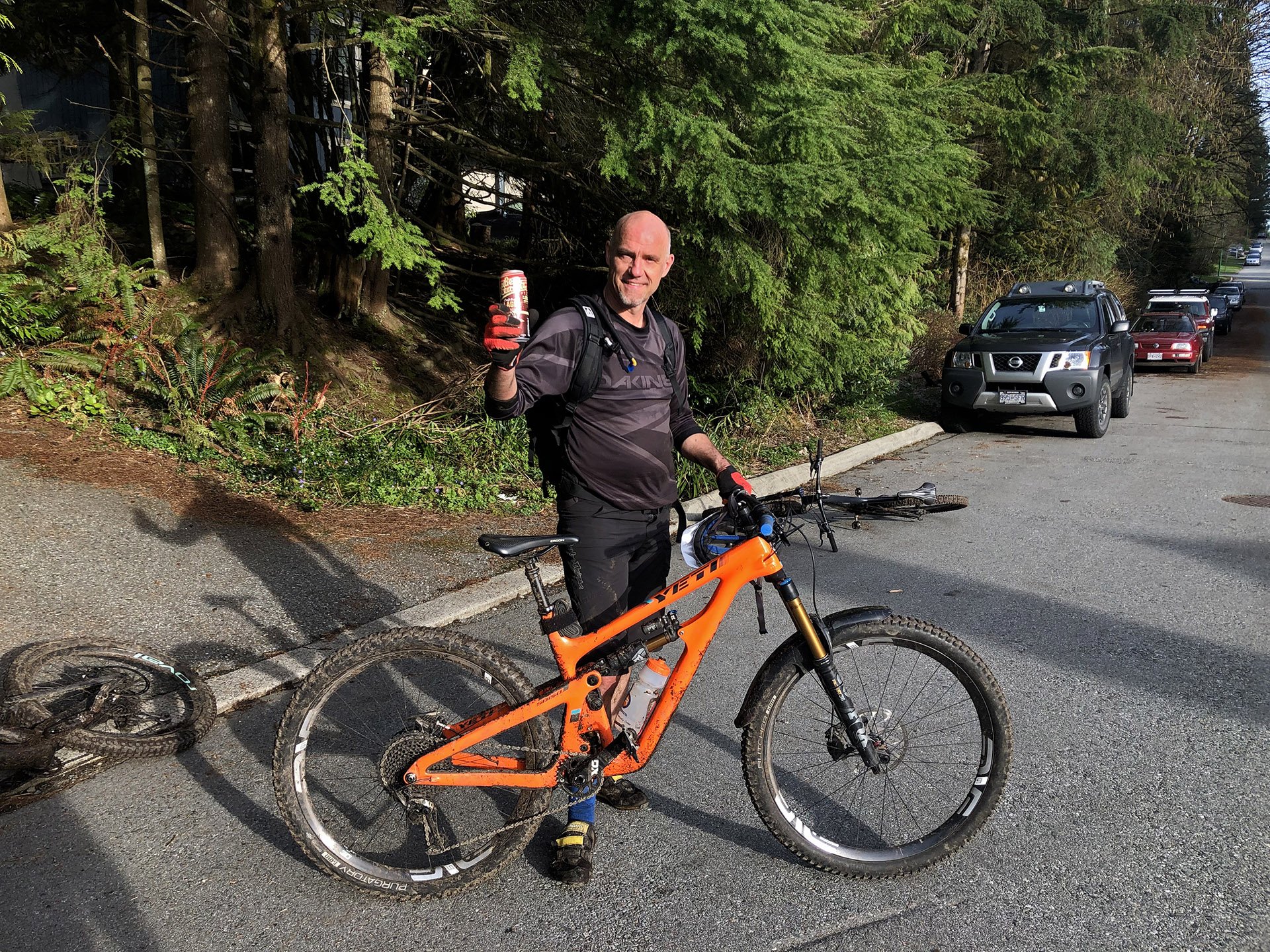
To finish up yesterday's ride I offered my buddy Alex the chance to ride the SB150. Al hasn't ridden much in the last few years and he rides a 2012 Giant Trance. After the ride he couldn't stop talking about how amazed he was by the ride. He kept asking where the battery is, which made us laugh, but then he started to look around the frame saying, "seriously, where's the battery?" The bike seemed so fast to him he figured it was an e-bike that got boosted while coasting downhill! He was serious. Note - ENVE test wheels shown here rather than the stock DT M1700s.
Intended Use
While this is bike is aimed at enduro racing my experience leads me to believe it's pretty damned versatile beyond that. If you are primarily a trail rider who sometimes rides challenging terrain and a bit of bike park, this might suit you just fine. If you generally ride challenging terrain and like to earn your vert, the 150 will be your huckleberry as well. If you find yourself most often on mellow, smooth low angle trails something like the SB130 or a Santa Cruz Tallboy. For my riding the 150 is just right; a great North Shore XC bike!
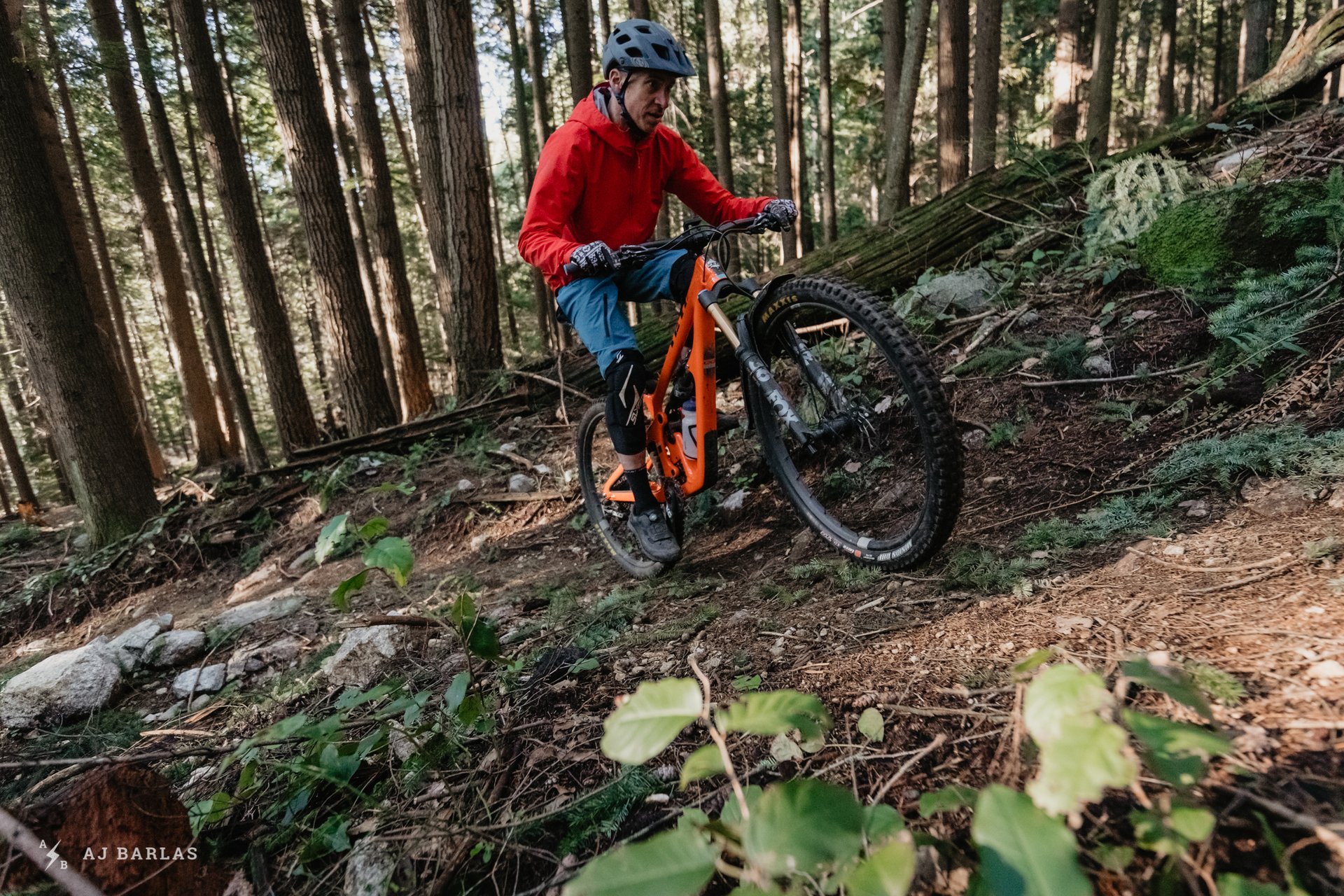
There isn't a climb I've ridden that I'd hesitate to take the SB150 up.
Wrapping Things Up
Is it starting to become clear that I have warm feelings for this beast that sometimes rides like short travel shredder? A bike that is both burly and nimble, with a fit that is better than any bike I've ridden? My awareness that gushing is unseemly for a reviewer is battling with my affection for the way the SB150 rides. This is a special bike that does many things very well. It somehow rides both large and small, morphing into a burly monster when needed and then becoming a nimble sprite when that's more appropriate. Climbing, descending, slow-speed and high-speed, this is a bike with very few weaknesses.
Yeti has however become a boutique brand with a price tag to match. The frame only option, which is only available for the higher priced Turq frame, will set you back 3800 USD with the pricy Fox X2 rear shock. The X01 model pictured here is 7599 USD. The least expensive version with the Carbon C frame is the GX model which is well spec'ed at 5199 USD. Brands like Transition, Norco and YT have parallel models which sell for significantly less. Whether it's worth the Yeti premium (which is similar to bikes from Specialized, Santa Cruz and Trek as examples) is a personal decision, but this is a bike that has me hankering to ride it whenever I'm doing something else. It's a bike that gets me on the trail more because I'm performing better and having more fun and it's tough to put a price on that.
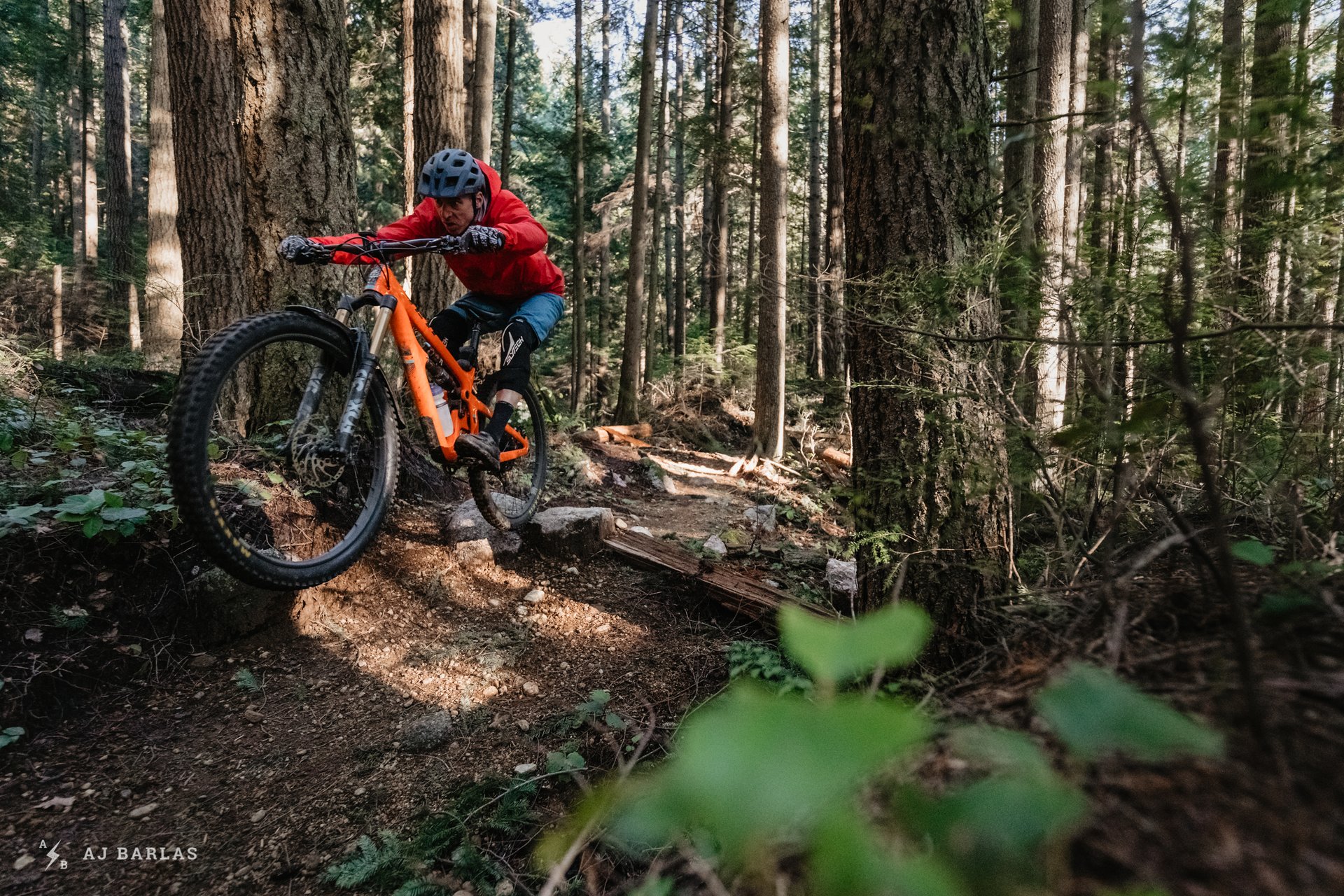
Tester Info and Set up
Tester info for Cam McRae: Height - 183cm/6' Weight 72kg/160lbs. Home trails: Vancouver's North Shore. Preferred reach: 475-485mm. Usual bike size: Large but sometimes XL. Yeti SB150 set up. Tire pressure: 20psi front, 22psi year. Fox 36 Grip 2 Fork 70 PSI HSC 15 clicks LSC 2 clicks HSR 6 clicks LSR 9 clicks. Fox X2 rear shock: 160 PSI HSC 8 clicks LSC 6 clicks HSR 12 clicks LSR 12 clicks. (all damping adjustments measured from fully closed clockwise position)







Comments
IslandLife
5 years ago
Cool bike, great to hear that it sounds like it lives up to the hype. At those prices it had better. Interesting times... we seem to have some awesome shorter travel bikes that climb like shorter travel bikes while descending like long travel bikes. And we are now seeing a crop of long travel bikes that descend like long travel bikes but handle and climb like shorter travel bikes...
Sounds like it's time for shoot-out between the best-long-travel-feeling short travel bike and the best-short-travel-feeling long travel bike...?
Reply
Speeder1
5 years ago
I just got an SB150 a week ago. I’ve got three chunky, abusive rides on it so far and I agree with your assessment. It’s a really fun bike that mobs the rough downs, corners well, and can climb.
I made a plastic fender out of the top of a Rubbermaid roughneck storage container that zip ties to the seat tube and portion of the frame that is just behind the switch mechanism. It is doing a good job of keeping the muck off the switch mech and away from that little shelf under the switch mechanism that collected mud on your test bike.
I had a similar home made fender on my 5.5 and it did a good job of keeping the switch mech on that bike out of the line of fire from the rear tire. In that case, after 1200 miles with an occasion grease gun hit, the switch mech is in perfect shape.
I’m running a 2.5 Aggressor in the rear with no clearance issues, and it’s been muddy on my home trails lately.
Thanks for the review.
Reply
Cr4w
5 years ago
$3800USD frame required you to cut up a rubbermaid container to make a plastic fender.
Reply
IslandLife
5 years ago
That's my confusion with this as well.. it seems as if the marketing team won the argument against the engineering team on this one. It would seem smart from a maintenance perspective to protect and cover the switch a little more. But, it is one of, if not the biggest, selling point of the bike and so I can understand wanting people to be able to see it.
But the way that mud and crap was caked in behind the swingarm, which looked like the only way to properly clear it out was by removing the swingarm... concerns me.
Reply
Chad K
5 years ago
I think it comes down to riding location a lot. Where I ride, the dirt is more sand based and does not collect in that spot beneath the switch infinity link. Also, on this bike, the SI is actually more covered from the side by the rear triangle than previous SB models, not that has any real bearing on preventing dirt buildup. Regardless, I am fairly meticulous about my bikes so the SI gets wiped with a microfiber towel a few times a week and the SI gets fresh grease monthly.
And in regards to the comment above, I don't think the bike really needs a fender if you do regular maintenance, but I understand if people want to add one.
Reply
Speeder1
5 years ago
I’ve made fenders for the rear suspension bearings and bushings on many different bikes in the last 20 years, including Specialized, Ibis, Santa Cruz, and Yeti. It’s one of the first things I do when setting up a new bike. It seems to prolong the life of any such pivot points that are right in the line of fire off the rear wheel and it makes cleaning tight spaces around suspension parts easier because they don’t get as dirty. I’m not sure why the MTB engineers and designers have not incoporated small plastic fenders as part of the design, as moto design teams have been doing for decades. Amazing that we are just now seeing this on bikes.
Reply
Cam McRae
5 years ago
I’d love to see a photo of your fender Speeder.
Reply
Chad K
5 years ago
I would love to see it as well
Reply
Cam McRae
5 years ago
Here is Speeder's fender. I assume it's attached with zip ties but he'll have to confirm.
Reply
Speeder1
5 years ago
Correct. High tech zip tie attachment system.
Edit: attached to seat tube and frame section just behind the SI.
Reply
Pete Roggeman
5 years ago
Nice job. 'Clean' finish ;)
Kos
5 years ago
Nice. Send that photo to Yeti, for a "favor to be named later"!
Chad K
5 years ago
Attached to the seat tube?
Sid Datta
5 years ago
Hi Cam,
This article is god send for me :) would you mind sharing your suspension settings- fork/shock sag / compression and rebound. I am 160 lbs as well and would love to hear what worked for u. Love the review and love the sincerity of this site.
Regards.
Reply
Pete Roggeman
5 years ago
Sid, he did list all that info - right at the bottom of the article ;)
Reply
Sid Datta
5 years ago
My bad :) - he had given me lemonade, and here I was looking for the lemon.
Thanks 🙏
Reply
Chad K
5 years ago
Really enjoyed this article. Funny that the end had the shout out to the SB130 and SC Tallboy, as I just got off a Tallboy 3 in order to pick up the SB130. Imho, I think Yeti did a great job with both their new bikes and I'm pretty darn happy with mine.
Reply
cyclotoine
5 years ago
This geometry is pretty similar to the transition sentinel, and while the suspension platform is very different I wonder if you can compare the two?
Also, since we always must complain about something... At this price, they should have at least two different chainstay lengths across sizes.
Reply
Cam McRae
5 years ago
I have spent a little time on the Sentinel, and you are right about the geometry. They are about as close as two bikes get. I didn't however spend enough time to give you any observations about how the bikes compare. I enjoyed riding the Sentinel but it was literally only one ride down from the Whistler Gondola.
Some brief observations on the Sentinel here https://nsmb.com/articles/transition-bikes-2018-sbg-first-ride/
Reply
Vik Banerjee
5 years ago
Yeti does make some nice looking bikes. :)
Reply
Jan Dvořák
5 years ago
So you run 20 and 22 psi in EXO tires? I just want to clarify that, because if it is so, then I am amazed. I am a little bit lighter and although I currently run 18 and 22 psi in my tires, they have burlier casing. Michelin Wild Enduro. In EXO tires I ran about 25 psi in the front.
Reply
Cam McRae
4 years, 11 months ago
Correct. Location is everything and our trails, while they are rough with lots of roots and rocks, are generally lower speed than most other places. With 'real' 2.4 or wider tires that seems to be fine for most of my riding on the North Shore.
Reply
IKRipper19
4 years, 3 months ago
Hey Cam. Great review. I just purchased an SB 150 over the holiday break and have been drooling over it ever since- can't wait to get on it! I am a little concerned though with the sizing. I know I should have demo'd it before riding it, but the deal was presented at a time when demoing wasn't an option, (December in Calgary, AB) so I pulled the pin on it. You noted that you rode/ ride a size large and are similar size to me (181 cm). How did the large size work for you? What do you think a medium would have brought to the table for you, if you had ridden it?
Thanks
Ian
Reply
Cam McRae
4 years, 1 month ago
Just seeing this now IK and I'm guessing you bought the medium? Obviously there are many factors that influence sizing but the Lg. is aces for me. I'm mostly legs and my arms aren't particularly long, but with a 770mm bar it's just right. I certainly wouldn't want to go smaller now that I've ridden the large. Sorry if this wasn't what you wanted to hear and hopefully you can make whatever size you've got work.
Reply
Juscelino Castro Blasczyk
3 years, 9 months ago
Comgrats! Nice article.
How does the Sb150 compares to Megatower? What pros and cons for each one?
Thanks,
Jk
Reply
Please log in to leave a comment.